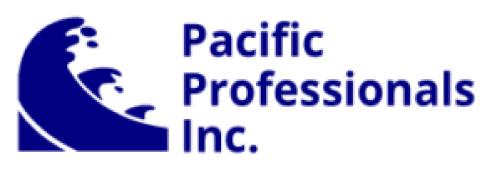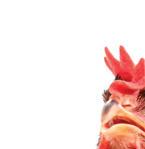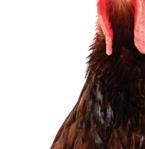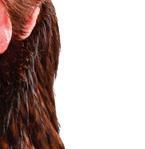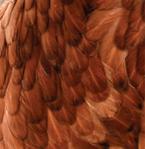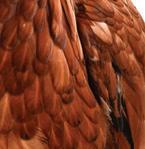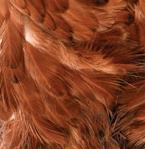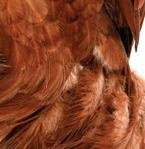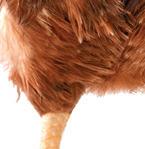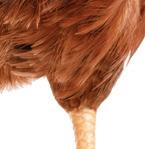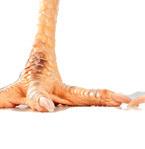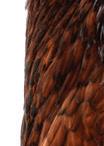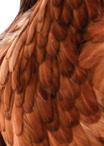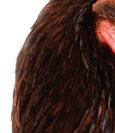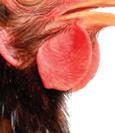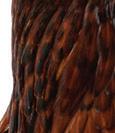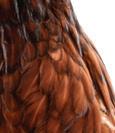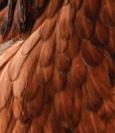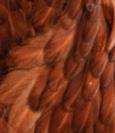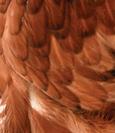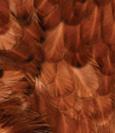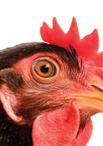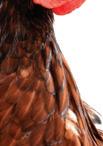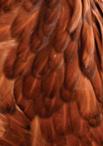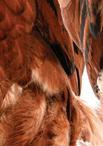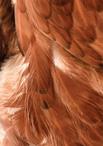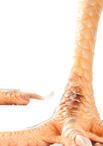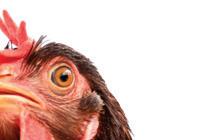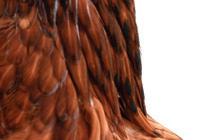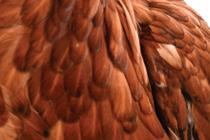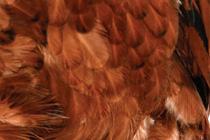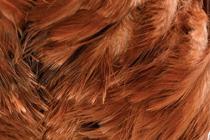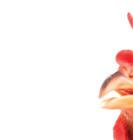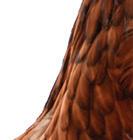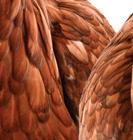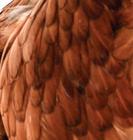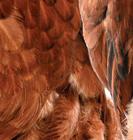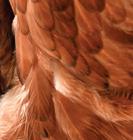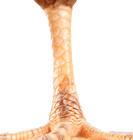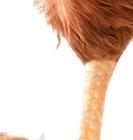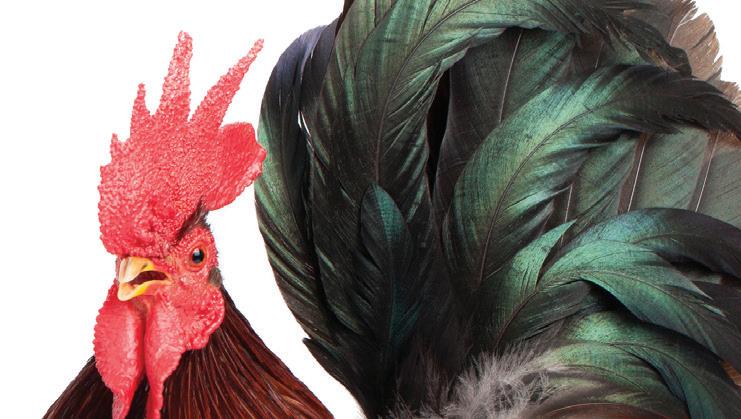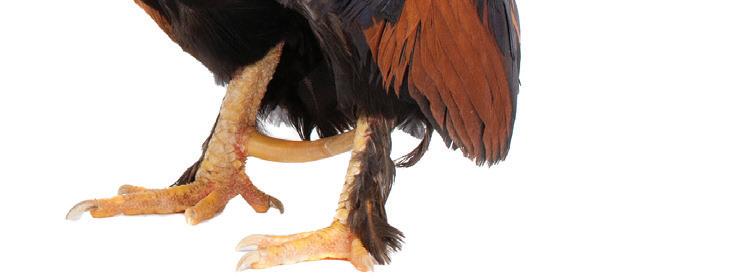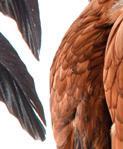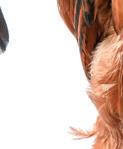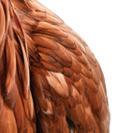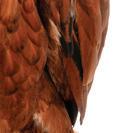












June
The Pacific Veterinary Conference brings excellent continuing education to a worldclass vacation destination. The four-day conference gives you the opportunity to earn CE with plenty of time to spend with family and friends exploring the iconic City by the Bay. For those who can’t attend in person, PacVet is offering the Small Animal Medicine and Technician tracks both in-person and in a live, virtual format. For more information, see page 26.
CVMA Fall Seminar in Palm Springs
September 30–October 2, 2022
12 CEUs for veterinarians

8 CEUs for technicians / CVMA CVAs
At this year’s CVMA Fall Seminar, take dynamic CE sessions while enjoying the luxurious Palm Springs region. This seminar features three half-day sessions for veterinarians and two half-day sessions for technicians, leaving afternoons free to enjoy this desert oasis with family, friends, and colleagues.

For more information, see page 14. Registration opens soon. Watch your email for more information.
Registration for all CVMA events can be made online by logging onto cvma.net or by calling 800.655.2862.
Did you know that CVMA members can manage their CE records on the CVMA website? To access and keep track of your CE history, simply log onto your account at cvma.net, click on the My Account tab, and navigate to Continuing Education Credits.
The Publication of the California Veterinary Medical Association
Publisher Dan Baxter
Managing Editor Kristen Calderon
Editor Taryn DeOilers
Classified Advertising Laura Phillips
Board of Governors
President Dr. Elisabeth Klapstein
President-Elect Dr. Keith Rode
Member-at-Large Dr. Michael Karle
Members
Dr. Peter Bowie
Dr. Patrick Connolly
Dr. Larry Correia
Dr. Jennifer Hawkins
Dr. Adam Lauppe
Dr. Julia Lewis
Dr. Peter Mangold
Dr. Teresa Morishita
Dr. Peter Vogel
Dr. James White
Dr. Jodi Woods
Dr. Dirk Yelinek
Student Representatives
University of California, Davis
Western University
Alison Pankowski
Katelyn DeVore
Treasurer Dr. George Bishop
Chair, House of Delegates Dr. Brent Wooden
CVMA Staff
Executive Director Dan Baxter
Assistant Executive Director Della Yee
Director of Communications Kristen Calderon
Director of Finance Kathy Van Booven
Director of Regulatory Affairs Dr. Grant Miller
Membership and Student Services Manager Laura Phillips
Publications Manager Taryn DeOilers
Accountant Bernice Evans
Communications and CE Coordinator Nicole Campos
Finance Coordinator Sharmele Browne
Meetings and Events Coordinator Lily Briggs
Meetings and Events Coordinator Erica Ferrier
Membership Coordinator Jennifer Smith
Receptionist Mary Young
Display Advertising
Please contact Taryn DeOilers at 916.649.0599 ext. 16 or email tdeoilers@cvma.net.
Tell
California Veterinarian (ISSN 00081612) is published bi-monthly by the California Veterinary Medical Association, e-mail: staff@cvma.net. California Veterinarian is an official publication of the California Veterinary Medical Association. Annual subscription rates to non-members: $50 U.S., $60 Canada/Mexico, $70 overseas. Price per single copy: $10 current year, $12 back issues. Periodicals postage paid at Sacramento, CA and at additional mailing offices. POSTMASTER: Send address changes to California Veterinarian, 1400 River Park Dr., Suite 100, Sacramento, CA 95815-4505. Phone: 800.655.2862
The CVMA and California Veterinarian assume no responsibility for material contained in articles and advertisements published, nor does publication necessarily constitute endorsement by them. ©2022 CVMA
My column this time around addresses a recent decision by the CVMA that has been given a great deal of time, consideration, and discussion by our leadership.
Effective for our forthcoming July 1–June 30 membership year, we are—for CVMA Active veterinarian members—initiating a new policy that directs a portion of the Active membership fee to the CVMA Political Action Committee (CVMA PAC). This new contribution will not increase the cost of membership for Active Members. Indeed, the CVMA’s 2021–2022 Active membership fee was $320, and for 2022–2023, that total amount will not change. Instead, $270 of that sum will be directed to membership dues, while the remaining $50 will be allocated to the CVMA PAC. As is presently the case, members will also have the option to make additional, voluntary PAC contributions as they may desire. We recognize that the decision to implement this CVMA PAC contribution may not be welcomed by all, and that some members may not wish to have a portion of their CVMA-directed funds earmarked for “political” purposes. We are sensitive to that viewpoint, but we ask you to consider the following:
First and foremost, the CVMA PAC is bipartisan. We do not play favorites from one side of the aisle or the other; instead, we engage with legislators (and candidates) from across the political spectrum to promote positions on issues that matter to our members and the veterinary profession as a whole. The contributions made by the CVMA PAC are an essential component in the CVMA’s representative efforts, enabling us to send a strong, collective, bipartisan message to members of the legislature that we are committed to supporting lawmakers who are engaged and supportive of our efforts to further the interests of veterinary medicine. There are also several healing arts professionals who serve at the Capitol— those individuals have a particularly thorough understanding of the issues and scope of practice challenges that we face; accordingly, the CVMA PAC makes those candidates a priority. When issues like antibiotic resistance in livestock, animal physical rehabilitation, animal blood banking, the Veterinary Medical Board’s “Sunset Review,” independent contractors, cannabis and pets, spay and neuter legislation, and countless other matters are before the legislature for discussion, lawmakers know to work with CVMA as the trusted voice for veterinary medicine in California. Our successful relationships with those lawmakers are due in large part to the CVMA PAC.
Second, the CVMA PAC operates as an entity that truly is “for veterinarians, by veterinarians.” You may not be aware that the CVMA maintains a committee of 17 volunteer veterinary members—your colleagues—who serve as stewards of the CVMA PAC budget, overseeing and directing the distribution of the CVMA PAC’s annual contributions. The CVMA PAC also offers CVMA members the opportunity to attend local fundraising events for legislators or candidates in the areas where they live and work.
Third and finally, we now need to up our game. For perspective, and adjusting for inflation, the CVMA PAC’s funding in 2021 (totaling $121,000) was less than it was in 1978, notwithstanding that (a) legislative issues are far more numerous and intense than they were 40+ years ago, and (b) despite our best efforts at securing greater voluntary donations, only 24% of our dues paying members currently participate in the CVMA PAC. Those figures lag well behind the participation numbers seen in many other California healthcare associations, some of whom have close to 100% member participation. If we can slightly more than double our annual CVMA PAC funding to approximately $250,000, we can make the minimum recommended contributions necessary to establish and cultivate relationships with key legislators who make decisions that affect the veterinary profession. This is the result that our changed Active Member fee allocation is intended to produce.
For better or for worse, “politics” is a reality for organized veterinary medicine; if the CVMA is to remain a strong, relevant advocate for the veterinary profession, it is imperative that we augment the CVMA PAC’s resources to come into conformity with present funding realities. For those of you who remain unconvinced, you may— when completing your dues invoice—contact the CVMA home office to request that the $50 allocation be earmarked for the California Veterinary Medical Foundation instead of the CVMA PAC.

On behalf of the CVMA Board, I very much appreciate your time and consideration.
Dan Baxter, Executive Director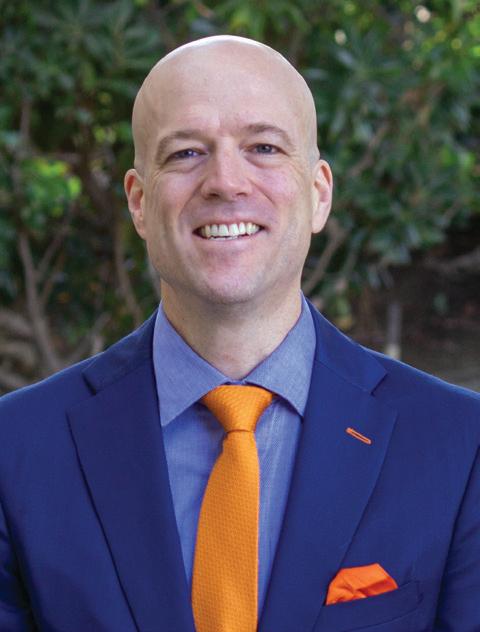
One year ago, I wrote about graduation and my impending future of practicing as a veterinarian. It’s amazing how much can happen in one year and how quickly it all goes by.
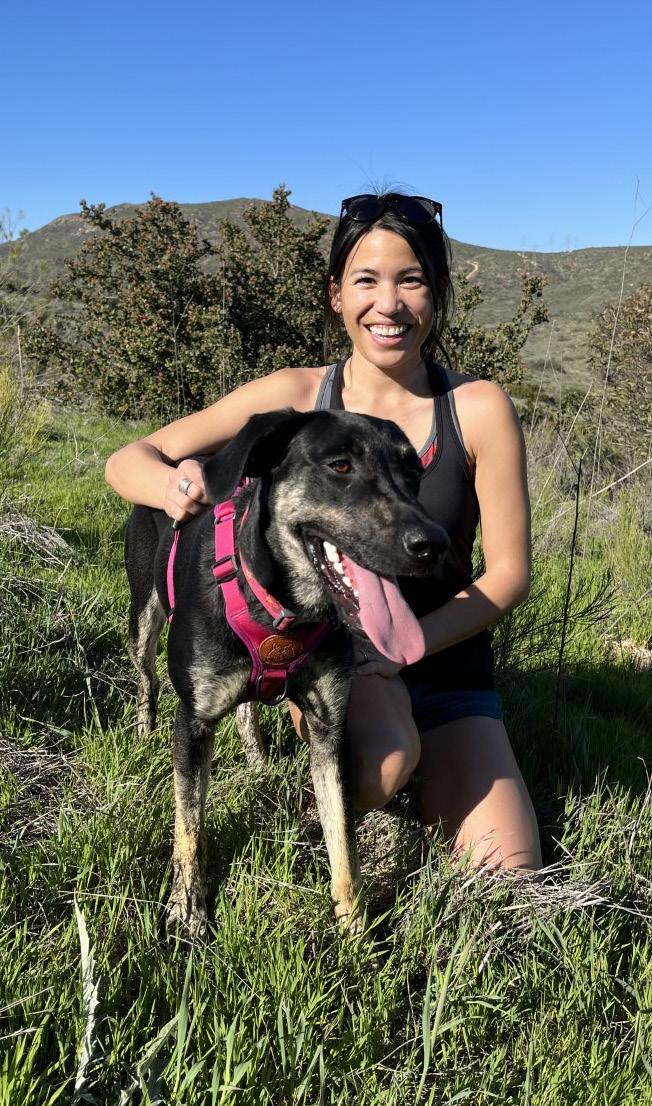
Nine months ago, I was nervous about wellness exams, wondering what on earth I’d encounter in the coming months, and mentally reciting vaccine schedules over and over so I wouldn’t forget them. Since then, I’ve covered quite a lot of ground.
I’ve worked up multiple hyperadrenocorticism and hyperthyroidism cases, performed foxtail explores and laceration repairs, diagnosed and managed two glomerulonephritis cases, handled critical-on-arrival cases while being the only doctor present, managed chronic kidney disease patients, palpated a suspected hepatic mass later correlated with chemistry results (abdominal ultrasound pending), stabilized toxicity patients, performed mass removals, spays, and neuters. And, I of course handled countless dogs with skin allergies and ear infections as well as vomiting and diarrhea patients. I’ve also come across a coughing case in which I auscultated a heart murmur and pulmonary crackles. Her owner could not afford thoracic radiographs, so we began empirical treatment of pulmonary edema versus chronic obstructive pulmonary disease—I put her on a course of Pimobendan and Furosemide, and so far, so good.
I am nowhere near a well-experienced doctor, but I sure am proud of how far I’ve come.
I’ve learned that while our first year out is a crucial one, it does not define our entire careers. I confess I’ve spent many moments comparing my experience to those of my classmates who have gone straight into emergency practice. They’ve done amazing work, such as splenectomies, foreign body surgeries, cystotomies, c-sections, and more! It’s so easy to feel like you’re falling behind. Now towards the tail end of my first year out, I truly understand that we’ve got our entire career to learn and acquire new knowledge and skills.
Our hospital surgeon gave me excellent advice. She said after every five years, reflect and ask yourself, “What’s next?” If you continue to stay on the same track, doing the same things, you will get bored and burn out. Create a niche for yourself.
Between now and that first five-year marker, I intend to sharpen my skill set to be the best I can be for my patients, clients, and colleagues. This includes understanding my boundaries and learning how to eventually move through them.
If there’s any advice I can give, it’s this: We are the masters of our own fate. Is there something more you want to do and learn? Seek it out. If your current practice does not fulfill some aspects of medicine that you’d like to learn, branch out. Call and e-mail other hospitals to ask to shadow and observe. Pick up relief shifts every so often; these can broaden connections, relationships, and experiences that will further your expertise. Growth does not come to those who wait.
Most importantly, find a home hospital that supports and encourages you every step of the way.
Lastly, save space for yourself outside of work. Invest time in your hobbies and take guilt-free time off. Juggling appointments, medical records, and callbacks is a tall task that requires a tremendous amount of effort and often leads to staying past our shifts. While veterinary medicine is a passion, there is nothing more important than our own health and well-being.
It has been an incredible year and an honor to write these articles for the CVMA. I hope my transparency has been welcomed in this community.
Membership dues are available to pay online starting May 15. The CVMA thanks all of our members who have renewed their memberships. If you haven’t renewed yet, it’s not too late! Please visit cvma.net, click on Pay Your Dues Online, and continue to take full advantage of all your CVMA member benefits. If you have any questions or wish to renew, please call Sharmele Browne at 800.655.2862, or email at info@cvma.net.
The commencement ceremony for WesternU’s College of Veterinary Medicine will take place on Friday, May 20. The UC Davis School of Veterinary Medicine commencement ceremony is scheduled for Friday, May 27. The CVMA congratulates and sends our best wishes to the graduating veterinary medicine students of both schools!
This June, the CVMA would like to wish the LGBTQIA+ community a Happy Pride Month! Pride Month is a time to remember LGBTQIA+ history, celebrate those who have paved the way for a more equitable future, and raise awareness of current issues facing the community, including issues relating to discrimination and marginalization. The CVMA supports the diverse spectrum of sexual orientations, gender identities, and forms of gender expression in the veterinary profession.

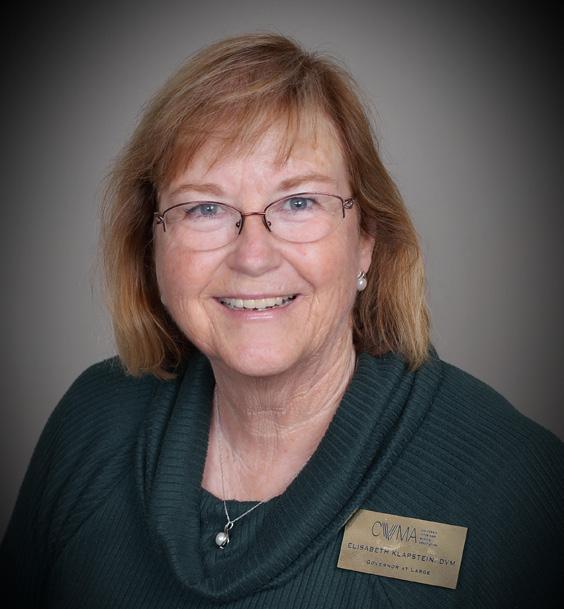
This issue of California Veterinarian will reach you as my term as CVMA’s President nears its conclusion. Indeed, on June 30, my six-year term on the CVMA’s Board of Governors—a stint that seems like it started just yesterday—will also end. This forthcoming transition has inspired me to look back on the CVMA’s accomplishments of this past year and beyond.
CVMA has nimbly negotiated the challenges created by the pandemic. We have provided continuing education in the formats each of our members needed. We have addressed mental health issues and added benefits such as the LifeWorks Member Assistance Program that help our members handle personal challenges and stressors. We have taken strides to address diversity, equity, and inclusion in our profession. We deployed our California Veterinary Medical Reserve Corps to yet another devastating wildfire—this time for 17 days to the Caldor Fire near Lake Tahoe, providing emergency veterinary care to displaced animals. And as it always does, the CVMA worked diligently to protect and defend our profession.
One of my hopes for my tenure as both a CVMA Board member and as President was to stress the importance of community within the veterinary profession. That includes the importance of cultivating a healthy, vibrant, and collaborative relationship between the CVMA and local veterinary medical associations throughout California. As a longtime member and leader in both the CVMA and two local associations (the Delta Veterinary Medical Association and the North San Joaquin Veterinary Medical Association), I am keenly aware of the importance—and distinct but related nature—of both levels of association. Among other things, the CVMA provides services, products, and resources critical to managing a successful career and practice, and is your statewide advocate at the Capitol and to the regulatory agencies that oversee veterinary practice. Meanwhile, your local association provides fellowship with colleagues in your specific area, allows you to address local problems, and supports local causes.
And, I am pleased to say that we have made good on my aim to nurture the rapport between the CVMA and its local counterparts. This year in particular, leaders of the
CVMA and local associations have taken affirmative steps to strengthen that all-important sense of community. In January, the CVMA hosted the first edition of “Cocktails and Conversation,” a virtual event at which state and local veterinary leaders came together to discuss various association-related issues and ways to work together to address those issues. The event was well-attended, and a post-event survey drew positive reviews…so positive, in fact, that the CVMA will be hosting thrice-yearly editions of “Cocktails and Conversation.” Each of these future sessions will focus on a particular substantive topic affecting the profession or its constituent associations; in that regard, our next session on the evening of July 13 will center on 2022 legislative and regulatory issues.
Relatedly, the CVMA has also started a group chat function on the CVMA Member App through which CVMA and local association leaders can exchange comments and ideas on any number of matters. This ensures that the conversational pipeline between veterinary leaders throughout the state remains open year-round, and discussions held through the app can in turn serve as inspiration for future topics at “Cocktails and Conversation.” In the end, the overall goal is to ensure that there is a robust linkage between veterinary leaders that serves both our state and local veterinary communities.
On July 1, I will pass the gavel to my able successor, Dr. Keith Rode, and I know he will accomplish great things as the next CVMA President. In the meantime, I look forward to the next chapter in my association career, which will continue to include both state and local membership and service. Without participation in both components, your veterinary “circle” is not complete. Only through your involvement in both the CVMA and your local association can you fully engage with your community, and fully ensure that your voice is heard locally, statewide, and even beyond.
I have very much enjoyed serving as your President, and I wish all of you happiness, health, and success!
c Director of the UCSF Institute for Neurodegenerative Diseases Animal Facility
c Cornell University
In my free time, I like to garden, cook, spend time with my partner Hurricane and our dog “Dolly Pawton,” dance, read, hike, and travel.
The most interesting case I worked on recently was optimizing the husbandry procedures for a colony of Catalina Gobies.
A book that impacted my life is The Untethered Soul: The Journey Beyond Yourself by Michael
A. Singer.I still want to learn how to play the guitar so I can play acoustic flamenco songs. I would also love to learn more about blockchain technology and how we can apply it for the betterment of our society.
The most gratifying moment at work was when I became certain that the people I lead are proud to work in our group due to the high quality of care that we provide our animal patients.
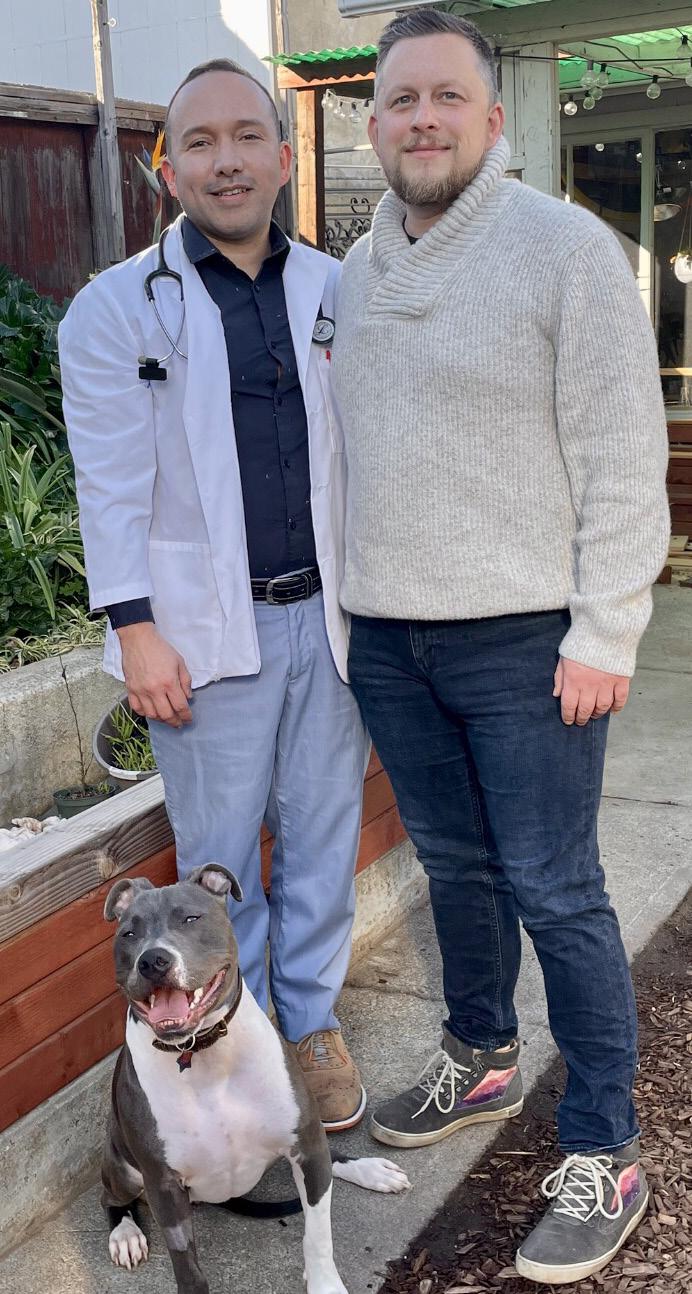
My role model is my mother for her courage and tenacity.
I am a CVMA member because it is one of the main ways we can form a strong, effective, and impactful community of veterinarians to better serve the animals we care for, our clients/ owners, and our state and country.
The 2022 Legislative cycle is well underway, with bills currently being heard in policy committees at the Capitol. Out of those hundreds of bills, the CVMA legislative team flagged approximately 25 of them as being potentially impactful to veterinary medicine, animal health and welfare, and/or employer-employee relations. Ultimately, after several levels of review and discussion, the CVMA Board of Governors took official positions on all of those bills at its April 2 meeting.

While the CVMA legislative team is following all bills closely, a few bills rise to a priority level due to their subject matter. Below are summaries of critical bills being addressed by the CVMA.
CVMA Position: Oppose
This bill would restrict veterinarians from performing a declawing procedure on cats unless it is being performed for a therapeutic purpose. The bill would impose a civil penalty that increases for each violation when a declawing procedure is performed. While not expressly written into this bill, the law—if enacted—would also subject veterinarians to regulatory enforcement by the Veterinary Medical Board, as it would create a legal prohibition of a veterinary medical procedure.
The CVMA opposes this bill because it would outlaw a procedure falling within the scope of veterinary medical practice. While the CVMA institutionally discourages the use of declawing as an elective procedure and supports non-surgical alternatives, the CVMA works to preserve the profession’s right to govern itself, and believes that veterinarians must be permitted to interact with clients and patients on a case-by-case basis to ensure that the best individual decisions are made in a given situation.
This bill was recently heard in the Assembly Business and Professions Committee on April 26. The CVMA submitted an opposition letter and testified alongside the Veterinary Medical Board in opposition to the bill. The bill passed the committee and will now go to the Assembly Appropriations Committee. The CVMA will continue to fight for the interests of the veterinary profession as this bill continues through the legislative process.
CVMA Position: Neutral, as amended
In its original format, this bill presented a number of issues for the CVMA due to the legal implications of its statements. While the intentions of the bill are ostensibly to educate the public about the obligations of pet ownership, there were several statements in the original bill that caused the CVMA concern. One example included use of the term “guardian” in reference to pet ownership. This term carries legal implications that invite litigation regarding non-economic damages and third-party representation of pets in legal proceedings. Additionally, the bill listed a number of dog and cat “rights”—such as the right “to a life of comfort, free of fear and anxiety”—that stakeholders felt impossible to achieve.
The CVMA joined a coalition with the Animal Health Institute and the American Kennel Club and signed onto two comment letters that suggested amendments to AB 1881 addressing the unintended legal consequences referenced above. The bill was amended in the Assembly Business and Professions Committee on April 26 to remove the term “guardian” and also added more aspirational (but non-binding) language to declare what animals “deserve.”
This bill will next go to the Assembly Appropriations Committee.
CVMA Position: Support
Current law permits veterinarians to discuss with clients the use of medicinal cannabis for animal patients but prohibits cannabis recommendation. Over the past two years, unsuccessful attempts were made in the form of AB 384 (Kalra) and SB 627 (Galgiani) to permit veterinarians to recommend cannabis.
This year, Assemblymember Ash Kalra submitted AB 1885 in another attempt to permit cannabis recommendation by veterinarians. The CVMA has a strong working relationship with Mr. Kalra and his staff and is grateful that they recognize that veterinarians need to have complete and effective conversations with clients about cannabis. Permitting cannabis recommendation to clients will help to legally enable the profession to do so.
This bill passed the Assembly Business and Professions Committee on April 19. The CVMA submitted a letter in support of the bill to all committee members and CVMA lobbyists testified in support of the bill during the meeting. It will now go to the Assembly Appropriations Committee.
In its original format, this bill would have prohibited the development or expansion of commercial animal feeding operations and slaughterhouses in California, including the addition of new businesses. This includes feedlots, broiler farms, aquatic farms, and other commercial agriculture production operations that sell animal-based products or byproducts.
The CVMA was opposed to this bill due to its impact on food production in the state, among other reasons. The CVMA submitted an opposition letter to the authors early on in the legislative cycle. Due to the significant opposition expressed by several agriculture lobbying groups as well as the CVMA, the authors are currently working with legislative consultants to incorporate a number of amendments into the bill. If those amendments are incorporated, the CVMA will be able to lift its opposition.
This bill is pending hearing in the Assembly Agriculture Committee. See chart on page 12 for CVMA positions on all legislation currently being monitored by the CVMA.
January 3 Legislature reconvenes
January 10 Deadline for Governor to submit budget
February 18 Last day for bills to be introduced
May 27 Last day for bills to pass out of house of origin
July 1 Last day for policy committees to meet and hear bills
August 25 Last day to amend bills on the Floor (general session)
August 31 Last day for each house to pass bills
September 30 Last day for Governor to sign or veto legislation
For specific information on bills or to track CVMA-monitored bills through the legislative process, visit the CVMA’s online Legislative Action Center. CVMA members can login to the site for detailed information on each bill.


Bill # Author Title
AB 1885 Kalra Cannabis and cannabis products: animals: vet medicine Support
AB 2606 Carrillo Cats: declawing procedures: prohibition Oppose
AB 1881 Santiago Animal welfare: Dog and Cat Bill of Rights Neutral, if Amended
AB 2764 Nazarian Animals: commercial feeding operations slaughterhouses Pending Watch, if Amended
Bill # Author Title
AB 646 Low DCA: boards: expunged convictions Approve
AB 1648 Maienschein Disaster preparedness: animal wildfire evacuation plan Watch, Seek Information
AB 1781 Rubio Safe transportation of dogs and cats
Approve, If Amended
AB 1901 Nazarian Dog training services and facilities: requirements Watch
AB 2055 Low Controlled substances: CURES database Watch
AB 2723 Holden Animals: microchips: theft Watch, Work With Author
AB 2785 Friedman Emotional support animals — spot bill Watch
AB 2932 Low/Garcia Four-day workweek — spot bill Watch
AB 2948 Cooper Consumer protection: DCA: complaints Watch
SB 879 Wiener Toxicological testing on dogs and cats
SB 1009 Borgeas Division of community property: pet animals
Watch Closely
Watch
SB 1029 Hurtado One Health program: zoonotic diseases Support
SB 1031 Ochoa Bogh Healing arts boards: inactive license fees Disapprove
SB 1310 Leyva Professions and vocations: consumer complaints Watch
SB 1365 Jones Licensing boards: procedures Watch
SB 1417 Borgeas Dogs: licenses: issuance Watch
SB 1462 Bradford Processed pet food: designation as human food grade Disapprove
The CVMA PAC is bipartisan — supporting key legislators who in turn support veterinary medicine!
WHAT does the CVMA PAC do?
A strong, active CVMA PAC gives the veterinary profession the opportunity to establish and cultivate relationships with state lawmakers involved in issues impacting the veterinary profession. These relationships establish the CVMA as the go-to resource for lawmakers for information and opinions on legislation that pertains to animals or veterinary medicine.
WHERE do your contribution dollars go?
CVMA PAC funds allow CVMA representatives to attend campaign events and fundraisers put on by legislators, opening doors to important personal contact, and to remind lawmakers that the veterinary profession should be considered in the legislative process.
The veterinary profession is heard most effectively when we speak collectively, and the CVMA Political Action Committee (CVMA PAC) is the unified voice of California’s veterinary professionals. More support of the CVMA PAC means a louder voice for you and your colleagues at the State Capitol.
WHY support the CVMA PAC?
Because lawmakers need to be educated on critical issues affecting the veterinary profession and animal welfare, including:
• Scope of practice
• Veterinary Medical Board and licensure issues
• Pharmacy laws, including drug compounding
• Animal and public health and welfare
• Taxes on veterinary services
• Non-economic damages

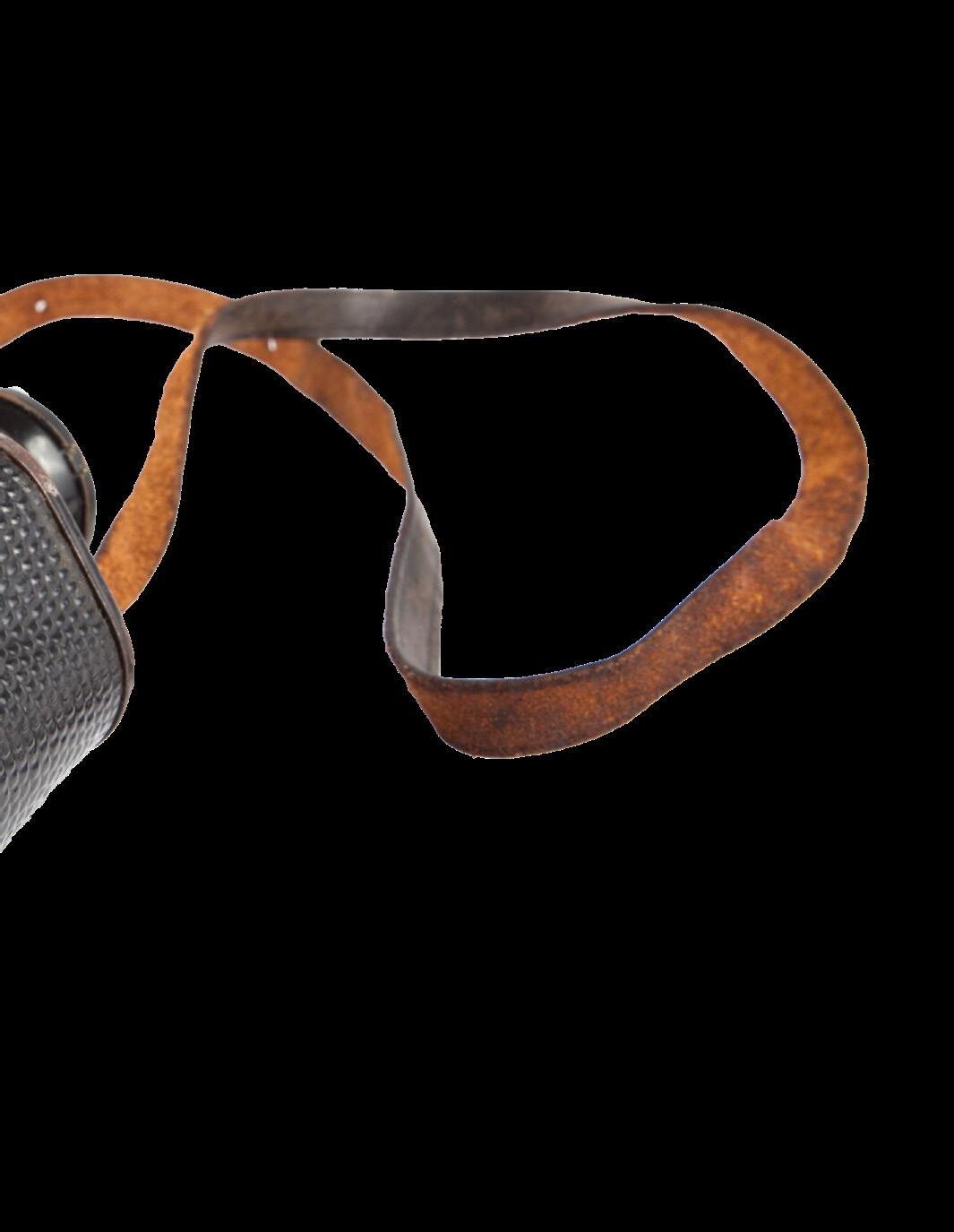
• Veterinary education
• Agriculture issues
• Encroachment of animal rights groups dictating the practice of veterinary medicine
• And much more
CVMA PAC contributions are combined with our members’ annual CVMA membership payment. Additional contributions can be made (and are very much appreciated) at any time by clicking on the CVMA PAC under the Government tab at cvma.net.
Palm Springs | September 30–October 2, 2022
Seminar Hotel
The Renaissance Palm Springs Hotel 888 E. Tahquitz Canyon Way Palm Springs, CA 92262

Discounted Room Rate
$179 per night plus taxes until September 8, 2022. Discounted rate available until the deadline or until the group block fills up — whichever comes first. Book your room online at cvma.net or call 888.236.2427 and ask for the CVMA Fall Seminar room rate.
Friday–Sunday • 12 CEUs
• Respiratory Disease
Carol Reinero, DVM, Ph.D., DACVIM (SAIM)
• Cardiology
Whit Church, DVM, DACVIM (Cardiology)
Saturday–Sunday • 8 CEUs
• Internal Medicine
Ann Wortinger, BIS, LVT, VTS (ECC, SAIM, Nutrition)
Sponsored by
Make your CE experience a weekend get-away at this year’s CVMA Fall Seminar! Veterinarians and technicians are invited to join us for mornings full of CE offered by captivating speakers, leaving afternoons for relaxation in gorgeous Palm Springs. Ride the Aerial Tramway and soak in the breathtaking views of the surrounding scenery. Experience the desert first-hand at the Living Desert Zoo Gardens. Need a break? Treat yourself with a relaxing spa treatment, lounge poolside with a good book, or clear your mind with a round of golf. No matter how you choose to experience Palm Springs, there is no better way or place to earn CE! Watch
CVMA Member: m Yes m No
September 30– October 2, 2022 • Palm Springs, CA
Do you want us to use this information to update your CVMA profile? m Yes m No
Please check one: m DVM m RVT m Veterinary Staff m Other
Attendee Name (Dr.):
Company/Practice:
Mailing Address: m Work m Home City/State/ZIP:
Phone: Fax:
E-mail:
Registration includes: Twelve maximum CEUs for DVMs, eight maximum CEUs for RVTs and CVMA CVAs, a syllabus, a certificate of attendance, and daily continental breakfast for registered attendees.
CVMA MEMBERS by after Aug. 18 Aug. 18
m DVM $315 $345
m RVT/Veterinary Staff $160 $190
NON-MEMBERS by after Aug. 18 Aug. 18
m DVM $415 $445
m RVT/Veterinary Staff $190 $220
Guests Breakfast Tickets
m Guests Continental Breakfast # @ $45/day $
Hotel Information
Renaissance Palm Springs Hotel 888 E. Tahquitz Canyon Way, Palm Springs, CA 92262 Tel: 760.322.6000
Enclosed is a check for $ Charge my VISA/MasterCard/Discover/AMEX $
Credit Card Number
Expiration Date CVV Code
Cardholder Name
Cardholder Signature
By registering for the CVMA Fall Seminar, I agree to the terms and conditions set forth below and the health and safety protocols for in-person attendance. Full details available at cvma.net.
The CVMA has secured a special room rate of $179 plus taxes. No resort fee, all amenities included.
Reservations: To book your room, call 800.468.3571 and reference the CVMA Fall Seminar or visit the learning tab at cvma.net. The conference rate of $179 per night is available until September 8, 2022 or until the group block fills up, whichever comes first.
Hotel Parking: CVMA attendee discounted parking rates: $20 self-parking, per night.
General Information
Reasonable Accommodation Request
To request a reasonable accommodation (alternate formats, interpreters, or special dietary needs) to participate in this seminar, please contact Della Yee by phone 916.649.0599, TTY 711, or email dyee@cvma.net with your specific accommodation needs.
Payments
Mail completed form along with check or credit card payment to: The California Veterinary Medical Association, 1400 River Park Drive, Suite 100, Sacramento, CA 95815 or fax to 916.646.9156. You can also register online at www.cvma.net, or by phone at 800.655.2862.
Consent to Use Photographic Images
Registration and attendance at or participation in the CVMA Fall Seminar and other activities constitutes an agreement by the registrant to the CVMA’s use and distribution (both now and in the future) of the registrant or attendee’s image or voice in photographs, video, electronic reproductions, and audio of such events and activities.
Cancellation/Refund Policy
All cancellation requests must be made in writing and submitted either by fax, email, or regular mail no later than September 2, 2022 to receive a full refund, less 10 percent administration fee. No refunds for cancellations after this date.
Attn: Meetings & Events Department
California Veterinary Medical Association-Fall Seminar 1400 River Park Drive, Suite 100 Sacramento, CA 95815
By fax: 916.646.9156
By email: staff@cvma.net
If you have any changes or additions to this form after submission, please call us at 800.655.2862.

With over 2,700 volunteer veterinarians, registered veterinary technicians, veterinary assistants, and students, the California Veterinary Medical Reserve Corps (CAVMRC) is the largest veterinary medical reserve corps in the country. When deployed, the CAVMRC’s volunteers work tirelessly to provide free medical care to animals during a disaster.
As wildfire season in California has become longer and more intense, so have the efforts required from CAVRMC’s volunteers and leaders. The average deployment of CAVMRC volunteers to assist local animal authorities is between two and three weeks. Moreover, these deployments require field coordinators and other volunteers to set up camp in remote areas, or in nearby buildings willing to offer temporary housing, for days at a time.
“While deployed, CAVMRC has set up response ‘hospitals’ in an airport lobby, a vacant shopping center,
and abandoned county buildings,” said Dr. Jay Kerr, a veteran field coordinator for the CAVMRC. As a result, there is oftentimes no place to get adequate sleep, shower, receive internet reception, or—in the case of wildfires—fully escape from the dangerous air quality. In light of these issues, the CAVMRC Steering Committee — composed of region coordinators and other key CAVMRC leaders—identified the need for a mobile command center to support the CAVMRC during its deployments. This nowpurchased unit is a 40-foot Class A recreational vehicle that provides sleeping accommodations for six, two full-sized
bathrooms, a full kitchen with a standard refrigerator and freezer, a washer and dryer, dual-zone air conditioners and heaters, two industrial-strength air purifiers, a 10,000-watt generator, WiFi and satellite capabilities, and more.
With its many amenities, the mobile command unit will serve multiple vital functions for the volunteers, including transporting CAVMRC deployment supplies and providing important visibility for the CAVMRC during disaster response deployments. In addition to housing CAVMRC field coordinators, the command center will also provide a quiet, climate-controlled environment with clean air for CAVMRC personnel to meet, rest, sleep, eat, and shower, as well as serve as a base of operations for deployment communications, operations, and logistics.
“Our new command vehicle will undoubtedly lead to better organization and communications at disaster scenes,” Dr. Kerr said. “The vehicle will provide our CAVMRC volunteers a safer, more efficient environment in which to work. The improved management of triage, treatments, rounds, supplies, logistics, communications, etc. will be a huge win for the animals in care!”
The CVMA and CAVMRC would like to express gratitude to the Bernice Barbour Foundation, whose generous grant made this mobile command center a reality.

You’ve probably heard it millions of times, “Just ask for help.” How do you do that when you don’t know what help you need, or when you don’t know what to say or how to say it?
You are not alone. Asking for help takes courage and practice. Once you get into the habit, your work productivity as well as your emotional health will improve.
Asking for help at work can be daunting and unfamiliar for some people. People resist asking for help mainly due to fear of rejection. Asking for help also requires a good level of selfesteem, a belief that you are worthy of help, and trust that help will come to you should you ask for it.
Psychologist Guy Winch explains that rejection hurts so much because it causes our brains to light up in the same way as when we are physically hurt. It is believed that huntergatherers would die if they were rejected from the tribe and we have that wired into our brains. That is why it can be so hard to reach out to others—because the fear of rejection is very powerful.
You may also have critical beliefs about yourself that tell you that asking for help is a sign of weakness or that you should not have to ask. You may not even be aware that you speak to yourself in this way, or that you talk yourself out of reaching out for support in the work environment. In addition, those living with depression or anxiety may feel anxious or doubtful that their needs can be met.
Feelings you might experience include:
• Embarrassment–feeling awkward asking for help
• Frustration–angry that you need help
• Sadness–feeling unable to ask for help
• Shame–feeling unworthy of help
• Guilt–feeling like you are doing something wrong
• Anxious–fear of asking for help
• Numb–you avoid asking for help completely
Disadvantages of not asking for help:
• Feeling overwhelmed from workload or responsibilities
• Burnout from not delegating
• Low self-esteem due to reinforcing the belief that you have to do it yourself
• Isolation and lack of connection to co-workers

• Frustration with yourself and others
• Internal suffering and conflicting emotions
• Lack of trust between you and co-workers
Benefits of asking for help:
• Fosters a connection to others
• Builds resilience
• Increases productivity
• Encourages others to ask for help
• Increases gratitude
• Brings clarity to communication
• Demonstrates maturity
Honesty. Be honest with yourself about what support you need. Keep track if you put off asking for help—whether it’s a question on a project or how to ask for a pay raise. Then, be honest with the person you have asked; honesty is a strength. Humility. Humility is not the same as humiliation. Humility means you believe you are no better or worse than
anyone. Remembering your humility can often help with challenging tasks, as you know that everyone goes through this—not just you.
Communication. Be clear and precise with the help you want and keep clarifying how you are feeling. Remember, do not assume members of your team know what you want or need as assumptions can lead to misunderstandings and mistakes.
Trust in yourself and others that you can ask for what you need and that someone will be able to help and support you. Trust that you deserve to be supported.
Practice. It takes time and effort to get comfortable with asking your manager and co-workers for help. You can begin practicing by asking for help once a day, start by asking to be shown a new skill, or ask a question if one comes up in a work meeting. If you feel like your workload is getting to be too much, or you need to take a step back, practice saying this. You could start by using
this phrase, ‘’Hi Bob, when you have a minute today, I could really use your help with something.’’
Patience. Take time for yourself and others. You and your team have busy schedules and you may not get a response right away, so give time and space for coworkers or your manager to respond to you.
Acceptance. Not everyone will be able to help you when you need it. Don’t lose hope or let it deter you from getting your needs met. Rejection is part of life and will build up your resilience.
Imperfection. Embrace your humanity and accept that sometimes there are no right or wrong words to say. Try your best and be open with your vulnerability; that is what connects humans.
Other ways of communicating when not in person
Email. If you don’t feel able to have a face-to-face conversation, write an email to your manager explaining what it is you need and letting them know you would be willing to talk about it on a call if appropriate. Emails are also time-efficient so they may be a time saver. Emails also give you time to think about what it is you want to say, and reflect on your response.
Video call. A familiar way of communicating during the pandemic, people are now more accustomed to this way of interacting.
Pick up the phone. If there is something important that you need to communicate to your manager—such as bereavement, sickness, or a personal struggle—it might be easier to pick up the phone to communicate the news. Remember, asking for help takes practice and time, but the rewards for reaching out to your team and manager will benefit the whole team as you set a standard for open and honest communication.
This article is courtesy of LifeWorks, a member assistance program (MAP) available to CVMA members offering confidential counseling and coaching services, health and wellness assessments, and self-guided resources and toolkits. You can find this and many other articles and videos on a variety of wellness-related topics, including relationships, mental and physical health, money, work, and more on the LifeWorks website and mobile app. If you are a CVMA member and have not received the invitation to join LifeWorks, contact jsmith@cvma.net or call us at 800.655.2862. If you are not yet a CVMA member and would like to take advantage of this and many other valuable CVMA member benefits, visit the Membership tab at cvma.net.

SPONSORED BY

The California Veterinary Medical Board (VMB) and its Multidisciplinary Advisory Committee (MDC) convened on April 19–21, 2022. CVMA Executive Director Dan Baxter, Director of Regulatory Affairs Dr. Grant Miller, veterinarian liaison Dr. Ken Pawlowski, and RVT liaison Nicole Dickerson attended the meetings on behalf of the CVMA. These meetings were conducted in a hybrid format, permitting the CVMA’s representatives to attend the meetings in Sacramento at the VMB’s offices. The following items were discussed:
Recent VMB enforcement activities against equine practitioners have caused extreme concern within the equine practice community. During the VMB’s January 19, 2022 meeting, both the CVMA and numerous practitioners from both racetrack and private equine practice requested that the VMB agendize a discussion of enforcementrelated laws and processes, particularly in relation to equine cases. That collective request was granted, with the VMB inviting the CVMA to make a presentation on the subject at the April meeting.
In anticipation of that presentation, the CVMA submitted a nine-page letter to the VMB discussing concerns about:
• How the Veterinarian-Client-Patient Relationship (VCPR) is established
• How the VMB determines the “necessity” of a veterinarian providing a drug or therapy to a patient
• How recordkeeping minimum standards apply to various types of veterinary practice (i.e. small animal/individual patient appointments vs. treatment rendered in a herd setting) and VMB expectations for what must be written in a medical record

• The contents and format of the VMB’s formal accusations and how they are posted online for public view
• VMB subject matter expert qualifications
The CVMA also prepared a PowerPoint presentation to assist in summarizing these topics. On April 1, the CVMA transmitted both the letter and the PowerPoint to the VMB and was fully prepared to go forward with its presentation on April 20.
On April 8, however, the VMB notified the CVMA that its presentation was being removed from the April 20 meeting agenda. This cancellation—which was based on stated concerns about the existence of pending disciplinary cases—spurred a flurry of public comments at the April 20
meeting, including requests from the American Association of Equine Practitioners, the American Veterinary Medical Association, numerous equine veterinarians, and the CVMA for the VMB to re-agendize this presentation so that solutions may be found to the issues described above. The CVMA’s comments were delivered by CVMA Executive Director Dan Baxter, as follows:
As we stated at your last meeting, there is a significant disconnect between the practice standards observed by equine practitioners in the field, and the standards to which those same practitioners are being held by this Board. Accordingly, we are requesting that this issue be agendized by the Board at a meeting in the very near future. And while I am heartened to hear from the statement just made that our presentation will in fact be permitted at a future meeting, that needs to happen very soon.
As you know, this item was initially scheduled to be taken up—today—through a presentation by the CVMA to the Board. As an antecedent to that discussion and at the Board’s request, we submitted a written analysis of laws that are causing concern in the equine practice community, and we identified a number of areas in which we believe significant progress can be made to help both those practicing equine veterinary medicine and those regulating it. Additionally, the CVMA sought to continue discussions on standards of care, who determines them, how they are interpreted, and how they apply to different practice types.
Our voice as consumers, and as the licensees who make this Board possible, must be heard. As to the cancellation of the CVMA’s presentation here today, we note that never before has this Board halted ongoing policy discussions due to pending enforcement actions, and we find this development troubling because it threatens the open democratic protocols upon which California’s political process relies. Moreover, while the Board’s decision to cancel our presentation was based on the position that we would risk inappropriately delving into the details of pending disciplinary actions, such is not the case. We have no intention of discussing individual
actions, parties, or fact patterns, and to postpone this discussion until the currently pending enforcement cases are concluded overlooks the facts that (a) those cases will stretch on for months or years, and (b) were this rationale taken to its logical conclusion, the existence of pending cases would preclude open dialogue on nearly all of the rulemaking packages currently in the works at the VMB.
We are eager to have thoughtful dialogue with the Board on the issues discussed in the materials we submitted on April 1. We once again are asking the VMB to honor its role as a public board to hear the voices of the profession. By agendizing this topic—and we would ask you to do so at your forthcoming July meeting— you will be sending a message to the profession that you are listening.
We cannot afford to wait for months or years. We need to act now.
By law, the VMB was not permitted to respond to the comments made by the CVMA or the various other speakers; accordingly, the VMB has not provided a formal response to the CVMA’s request. The CVMA earnestly hopes that the VMB will follow through on its prior commitment to agendize this critical subject, and to do so as soon as possible.
The VMB reappointed Dr. Richard Sullivan to serve another term on the MDC.
The VMB also tasked the MDC with exploring alternate pathways to licensure for RVTs. Currently, there are several ways that an RVT may become qualified for licensure in California, and concern has been raised as to the varying levels of competency that each pathway produces. Further analysis and opinion from the MDC was requested.
The MDC discussed several issues:
The California Registered Veterinary Technicians Association submitted a request to the VMB to consider expanding RVT scope of practice to allow RVTs to perform certain animal health care tasks without veterinarian supervision. The MDC analyzed current law and determined that, in order for RVTs to be able to provide such services to the public, legislation would need to be enacted to expand their scope of practice. The MDC recommended no further action by the VMB in relation to this request.
The MDC also discussed expanding the current VMB guidelines for cannabis discussion to include guidelines for hemp-based CBD products. After analysis, the MDC recommended that the VMB not pursue this addition.
The MDC recommended that the VMB alter California Code of Regulations title 16, section 2032.1 to exempt rabies vaccination administration from the Veterinarian-Client-Patient Relationship requirement and to make various amendments to Section 2030.3 regarding minimum standards for animal vaccination locations.
In regard to drug compounding by veterinarians and RVTs, concerns were raised that veterinary assistants also need to be able to compound medications in veterinary practices. The MDC concluded that a statutory change would be necessary to allow such compounding. In the meantime, the MDC voted to provide the VMB with draft guidance for drug compounding in veterinary practices.

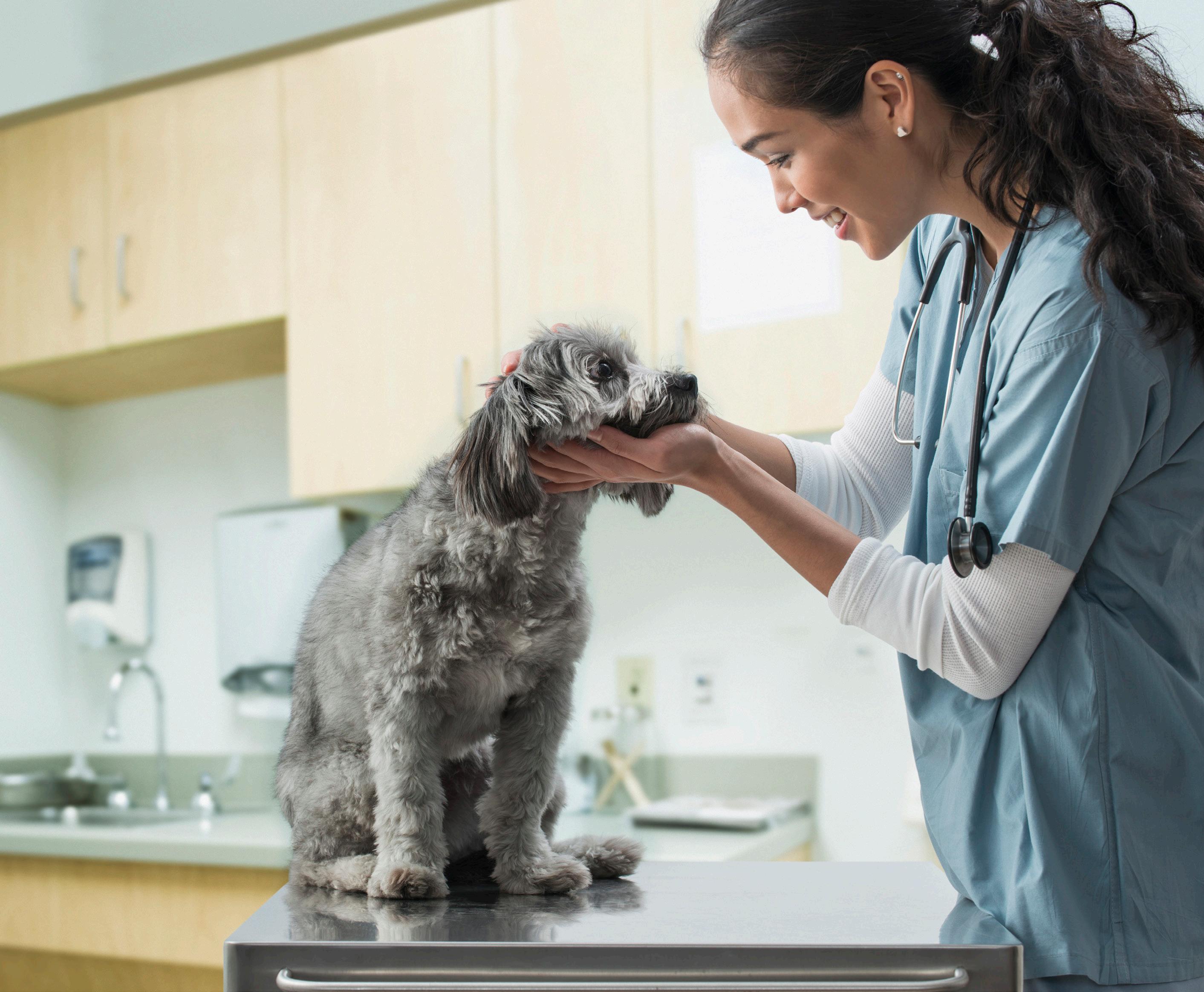

• Free legal advice through Wilke Fleury LLP. CVMA member veterinarians receive 30 minutes of free legal consultation each month.
• Free regulatory phone consultations for veterinarians to help answer your pressing questions.
• The Relief Veterinarian Directory supplies contact information for locum tenens veterinarians.
• The CVMA InLine Program assists CVMA members with workplace safety, legal issues, and laws and regulations that affect the veterinary profession.
• The Find-a-Veterinarian online listing aids potential clients in finding you by name, city, and practice type.
• Discounted prices on CE offered both online and in-person or fit your schedule.
• Management of CE records made simple through the CVMA website.
• The CVMA Certified Veterinary Assistant Program cultivates your veterinary assistants’ experience, education, and skillsets.
• Your voice at the State Capitol.
• Safeguarding your license by monitoring and reporting unlicensed veterinary activity.
NEW! A full-service member assistance program (MAP) through LifeWorks, providing confidential consultations, wellness resources and information, connections for community agencies, and referrals to both in-person and video counseling. CVMA members enjoy 24/7 access to the program online, by phone, and via the LifeWorks mobile app.
• Instant access to information critical to the veterinary profession through the California Veterinarian magazine, the CVMA Weekly e-newsletter, the CVMA website, press releases, and action alerts.
• The CVMA App provides fresh legislative updates, CE offerings, regulatory information, and more.
• Veterinary Insurance Services Company (VISC) for personal and professional lines of coverage specially designed to fit the needs of veterinary professionals.
• Delta Dental insurance plans to cover your personal and staff dental health needs.
• Vision Service Plan (VSP) for affordable, first-rate eye care plans.
• The CVMA Career Center allows you to post and check out classified employment ads and practice sales ads.
• The members-only online CVMA Directory helps you network and connect with colleagues and specialists throughout California.
• NEW! The Castle Press offers discounted printing services and products, including controlled substance security prescription pads, name tags, stationery, and more.
• NEW! Epicur Pharma offers discounts on its 503B product line for in-house use and administration as well as secondary dispensation to clients.
• CareCredit helps families manage veterinary costs through monthly payments.

• GlobalVetLink offers discounts on electronic prescriptions, health certificates, feed directives, and other products to assist practices in managing records.
• HireRight provides discounted employee background screening.

• Infintech lowers credit card processing rates.
• Staples Advantage offers substantial discounts on office items.
• Save on car rentals through Alamo, Avis, and National.
• California Academy of Sciences provides a discount on visits to the planetarium, aquarium, and natural history museum.
• TicketsAtWork provides discounts for theme parks like Disneyland, Disney World, Universal Studios, Great America, Sea World, and Six Flags.
• The Summer Work Experience Program (SWEP) helps students from UC Davis and WesternU connect with veterinary practices for summer employment.
• VISC gives UC Davis and WesternU student members complimentary professional liability coverage.
Now is the time to join the CVMA or renew your membership!
Mail a
membership application (available at cvma.net) to 1400 River Park Drive, Suite 100, Sacramento, CA 95815
#PacVet2022
There is still time to register for PACVET
June 2–5, 2022
Hosted by the California Veterinary Medical Association




Register to attend in-person or virtually (Medicine and TechnicianTracks only) by May 18.

Reserve your hotel room at the Hilton San Francisco Union Square by May 18.
Plan your CE schedule. You can view the full conference schedule at PacVet.net.
Check out the sponsored symposia offerings.
Register for the Endoscopy Lab (DVMs only).
Plan your visit to the two-day Vet Expo to view the hottest products and services.
Pack your good luck charm. PacVet features several raffles with valuable prizes!
Download the conference app and have everything PacVet in the palm of your hand.
Sign up to get your rabies titer tested.

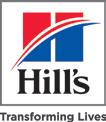

In California, establishing a Veterinarian-ClientPatient Relationship (VCPR) allows veterinarians to provide medications to clients without levying retail tax. Retail tax, also sometimes referred to as “sales” tax, is collected at the time of product sale to the public by businesses that possess a seller’s permit through the California Department of Tax and Fee Administration (CDTFA). Retail tax differs from use tax (also sometimes called “wholesale” tax), the latter of which is levied by businesses such as wholesale distributors that sell only to those who possess a seller’s permit.
If a veterinarian pays use tax on items at the time of purchase from a veterinary wholesale distributor or pharmaceutical manufacturer, they need not charge retail
tax (and remit it to the CDTFA) provided that they are furnishing medications to clients in conjunction with a professional service provided pursuant to an established VCPR. (Note that a qualified professional service includes the examination that itself establishes the VCPR.)
This tax exemption is written in California Revenue and Taxation Code section 6018.1, as follows:
Veterinarians. A licensed veterinarian is a consumer of, and shall not be considered a retailer within the provisions of this part with respect to, drugs and medicines used or furnished by him or her in the performance of his or her professional services. For the purposes of this section, “drugs and medicines” includes substances or preparations intended for use in the
diagnosis, cure, mitigation, treatment, or prevention of disease in animals and which is commonly recognized as a substance or preparation intended for this use. The term includes legend drugs, pills and capsules (other than vitamins), liquid medications, injected drugs, ointments, vaccines, intravenous fluids, and medicated soaps if those soaps are available only to veterinarians. The term does not include vitamins, shampoos, pet foods, prescription diet foods, artificial diets, flea powders, and flea sprays.
Of note, the retail tax exemption does not apply to vitamins, shampoos, pet foods, specialty diet foods, artificial diets, flea powders, or sprays.
This exemption is further reinforced in the CDTFA’s regulations:
California Sales and Use Tax Regulation 1506(j) pertaining to licensed veterinarians.
(1) Definitions. As used herein:
(A) The term “licensed veterinarian” means any person licensed as a veterinarian by the California Department of Consumer Affairs, Board of Examiners in Veterinary Medicine.
(B) The term “drugs and medicines” includes substances or preparations intended for use in the diagnosis, cure, mitigation, treatment, or prevention of disease in animals and which is commonly recognized as a substance or preparation intended for this use. The term includes legend drugs, pills and capsules (other than vitamins), liquid medications, injected drugs, ointments, vaccines, intravenous fluids, and medicated soaps if those soaps are available only to veterinarians. The term does
not include vitamins, shampoos, pet foods, prescription diet foods, artificial diets, flea powders, and flea sprays.
(C) The term “professional services” includes the diagnosis and treatment of disease or trauma in animal life. It also includes the administration of drugs and medicines by means of, for example, injection, intravenous solution, or oral or bodily application.
(2) Application of Tax.
(A) Licensed veterinarians are consumers of drugs and medicines which they use or furnish in the performance of their professional services. Accordingly, tax does not apply to a licensed veterinarian’s charges to clients for such drugs and medicines, whether or not separately stated.
The negative corollary of the last subsection excerpted above is that if a veterinarian is not furnishing medications in relation to professional services, then they are mandated to collect and remit retail tax.
The retail tax exemption does not apply to licensed pharmacies. This means that pharmacies are legally mandated to collect retail tax from clients who choose to purchase medications from them pursuant to a prescription issued by a veterinarian. This important distinction may help veterinarians in their conversations with clients who request prescriptions in lieu of medications directly dispensed.
Pharmacies that are not collecting retail tax on veterinary pharmaceutical sales should be reported to the California Department of Tax and Fee Administration at https://www.cdtfa. ca.gov/legal/icomplaint.aspx.
This article is for informational and general educational purposes only. It is not intended to take the place of legal advice nor should it be considered as a legal interpretation. Although significant effort has been made to ensure the accuracy and completeness of the information at the time of publication, the CVMA shall not be responsible for any errors or omissions, or any agency’s interpretation, application, or enforcement of the information presented herein.
Why choose Gatto McFerson to conduct your practice valuation?
• We have valued over 315 veterinary practices and clinics
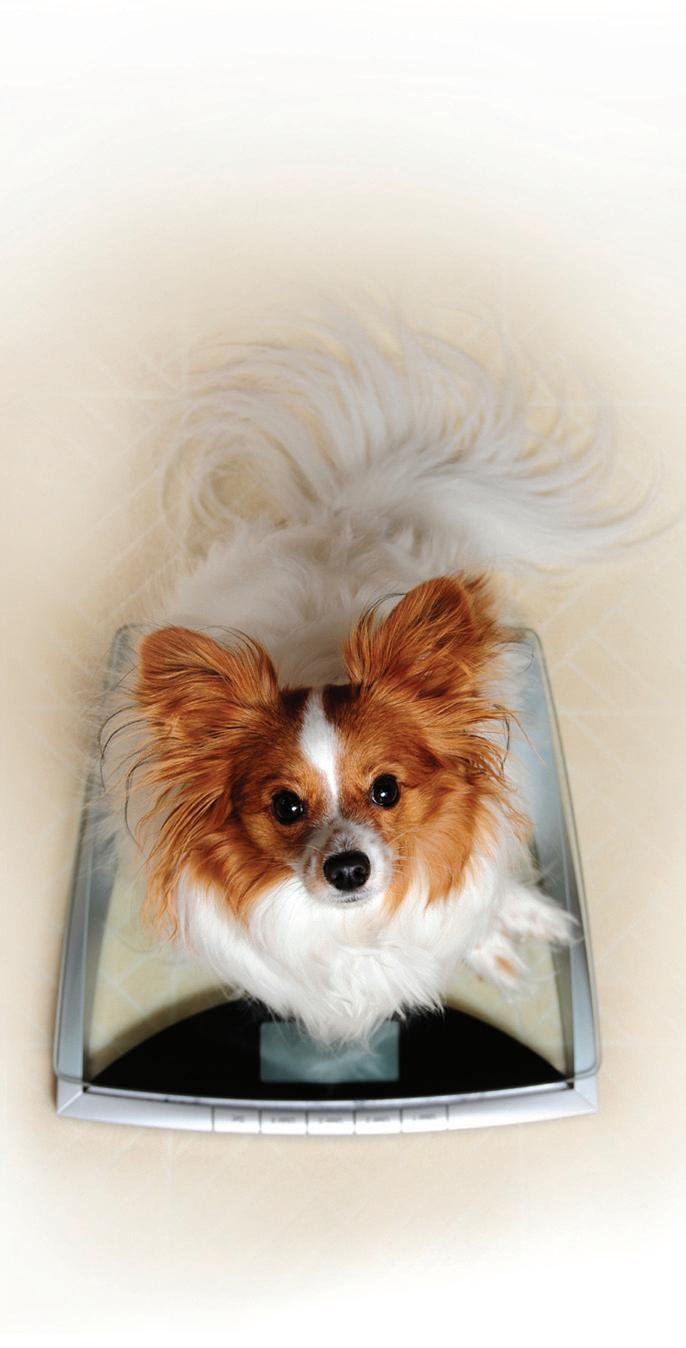
• We have the tax expertise you need when buying or selling
• We are Accredited in Business Valuations, a certification that only CPAs can hold
• We are an independent adviser with no financial stake in the transaction
We are experts in all aspects of:
• Buying and selling a veterinary practice or clinic
• Facilitating associate buy-ins
• Preparing an exit strategy
• Creating an estate plan
• Increasing the value of your practice
To maximize value and minimize taxes, contact:
Lou Gatto, CPA lou@gattomcferson.com
Tom McFerson, CPA, ABV tom@gattomcferson.com
Each year, the CVMA honors individuals and organizations who make significant contributions to organized veterinary medicine through their participation in CVMA activities and their promotion of the human-animal bond. These individuals truly represent the very best of the veterinary profession in California.
Congratulations to the recipients of this year’s CVMA awards!
Dr. William “Bill” Grant, II was practically born into organized veterinary medicine. His father was active in the CVMA, the Southern California Veterinary Medical Association (SCVMA), and the American Veterinary Medical Association (AVMA), while his mother served as the President of the AVMA Auxiliary. Dr. Grant continued this legacy early on, becoming involved in organized veterinary medicine while attending university and serving as President of the Student American Veterinary Medical Association.
Dr. Grant immediately became involved in the CVMA after graduation. Among the many positions he has held, Dr. Grant served as the CVMA President (2008–2009), as a CVMA House of Delegates member (1998–2004), and as the CVMA District II Governor (2004–2010). The list of task forces and committees on which Dr. Grant has served is similarly extensive, including the Ways and Means Committee (2009–2019) and the AVMA Advisory Committee (2010–present). He is currently the AVMA Advisory Committee Chair, the CVMA Representative to the AVMA House of Delegates, and has been a member of the Finance Committee since 2006.
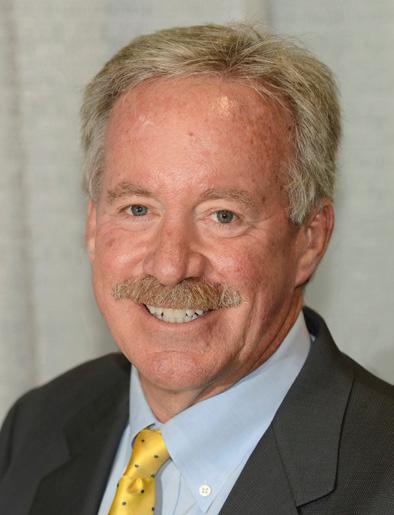
Even with all of the above accomplishments, perhaps Dr. Grant’s most significant contribution to the CVMA has been his tireless involvement with its insurance program, spanning over 30 years. He sat on the Insurance Committee from 1991–2007, twice serving as its chair. Dr. Grant has also served on the Veterinary Insurance Services Company (VISC) Board in a variety of capacities, including as its director from 2007–2013 and in 2019, and as a consultant in 2018. He also currently serves as the chair of the VISC Board, a role
he previously held from 2010–2013 as well.
The CVMA and those involved with VISC confidently rely on Dr. Grant’s leadership, expansive knowledge, and institutional memory to continually guide the insurance program to success.
“[Bill] is truly the backbone of VISC, without whose presence we would certainly struggle,” says Dr. Ronald Kelpe, who has worked alongside Dr. Grant for many years.
Dr. Grant was born in Anaheim, CA. He received his DVM degree from Kansas State University. After graduating, he interned with the Animal Medical Center in New York City, where he met his wife Dr. Dayna Wiedenkeller. Together they practice at the Community Veterinary Hospital in Garden Grove and have two children—a daughter who is studying veterinary medicine, and a son who is studying human medicine.
For 44 years, Dr. Jay Kerr has guided the CVMA with attentive leadership and generosity. After being a CVMA member for decades, Dr. Kerr was asked to serve on a CVMA task force, sparking his interest in organized veterinary medicine. It was the beginning of a long relationship with the CVMA, which included a term as CVMA’s president from 2011–2012.
One of Dr. Kerr’s most long-lasting impacts as President was his role in creating the California Veterinary Medical Reserve Corps (CAVMRC), the CVMA’s statewide animal disaster response program. Even at the time, Dr. Kerr’s efforts—for which he received the President’s Award— were greatly admired. But his legacy of disaster response and preparation would only come to be considered more invaluable and enduring as time went on, with wildfires growing in frequency and severity across the state. To this day, Dr. Kerr continues to develop and lead the CAVMRC, both as a co-chair of the CAVMRC Steering Committee and as a deputy field coordinator for on-the-ground work during deployments. Dr. Kerr has led the CAVMRC volunteers through some of the worst wildfires in California history, including the 2015 Valley Fire, 2017 Tubbs Fire, and 2018 Camp Fire.
Dr. Kerr’s contributions to the CVMA extend far beyond his disaster response efforts, with membership in a variety of committees, task forces, and boards. He served on the CVMA Board of Governors from 2006–2012, representing District VIII. He was also elected as the 2011–2012 President of the California Veterinary Medical Foundation, the charitable arm of the CVMA that in part funds the CAVMRC. Dr. Kerr is also a longtime member of both the Ways and Means Committee and the President’s Council Committee, where his acumen and altruism have continually paved the way for the CVMA through the years.

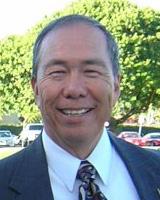
The past 49 years have seen Dr. Bob Sahara assist the CVMA and veterinary profession with the utmost loyalty, dedication, and strength. Dr. Sahara tended to the CVMA during some of the Association’s most challenging obstacles, and much of the CVMA’s resiliency and lasting success can be connected to him.
Dr. Sahara was open to offering his insight whenever and wherever the CVMA needed him, serving on a broad range of committees and task forces when requested. Dr. Sahara was the chairman of the Move Committee, the Environmental and Public Health Committee, the Ways and Means Committee, the President’s Advisory Council, and the Headquarters/Museum Committee, the latter of which he founded. Dr. Sahara also served on the Board of Governors throughout the 1980s, a period that was financially difficult for the CVMA.
When Dr. Sahara took on the role of CVMA President in 1989–1990, the CVMA was facing the departure of its Executive Director and an increasingly urgent need to restructure its finances. With the CVMA lacking reserves, Dr. Sahara and his Board had to start from scratch. The CVMA’s financial outlook was completely revolutionized and set on a prosperous, sound path that extends to the present day. This change can in large part be attributed to Dr. Sahara’s leadership, wisdom, and tenacity.
Dr. Sahara later sold his practice and came to work full-time as the CVMA’s first-ever Director of Regulatory Affairs. Dr. Sahara made a profound mark in that role as well, crafting the CVMA’s first regulatory handbook and other aids to abide by Cal/OSHA requirements, which continue to instruct practitioners today. His efforts in developing these compliance manuals earned him the CVMA’s President’s Award.
“I have always found Bob to epitomize honor, integrity, and a great sense of humor,” says Dr. Ken Schenck, former member of the CVMA’s Board of Governors.
If Leah Critchfield’s work as a Registered Veterinary Technician over the past decade could be summed up in one word, it would be “caretaker”—not only of animals, but of her community. In addition to being an RVT, Leah is an active paramedic who recently earned a degree in nursing. At her core, Leah always puts herself in service of others in need, whether animals or her fellow human beings.
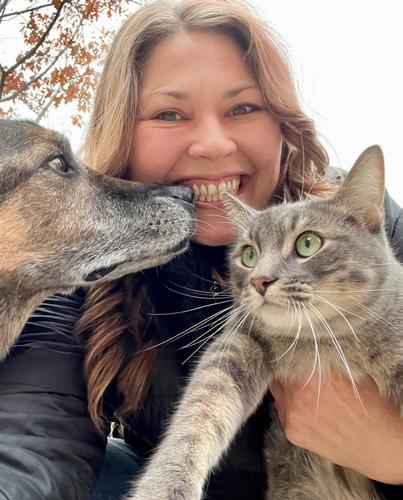
Leah’s colleagues praise her tenderness, positivity, energy, and ability to connect with others and alleviate their anxieties. “People look up to Leah as the ultimate RVT,” says John Maretti, Executive Director of the North Valley Animal Disaster Group. “She represents the profession as a compassionate professional, leader, and provider.”
Ever-committed to her community, Leah is ardently devoted to emergency disaster relief. She has served as the Community Outreach Coordinator and has sat on the Board of Directors of the North Valley Animal Disaster Group since 2009, taking over the Outreach Program in its infancy and transforming it into a robust, workable resource for the residents of Butte County. She has further served as both the Animal Group Supervisor and the Veterinary Medical Director for Butte County’s Animal Disaster Operation, coordinating veterinary resources and assisting over 10,000 animals throughout the multiple disasters that Butte County has endured over the past few years. Leah’s experience was greatly relied upon during the 2018 Camp Fire, when she served as the regional representative for the California Veterinary Medical Reserve Corps.
Although it is emotionally difficult work, Leah never shies away from putting herself in the thick of disastrous circumstances and offering her services. “As our RVT oath states we dedicate ourselves to aiding animals and society,” Leah says. “This endeavor allows us to not only promote public health at a local level but to aid our neighbors. We are all in this together.”
Nicole Dickerson may have come into veterinary medicine as a second career, but you’d hardly know it with her passion for the RVT profession and list of accomplishments spanning the past decade. Pivoting from a career in the theater arts, Nicole returned to school in 2010 to earn a degree in Veterinary Technology. She went on to apply her experience in the fast-paced, multifaceted world of stage management to becoming a Veterinary Technician Specialist in Emergency and Critical Care.
As the current Animal Care Supervisor at the University of California, San Francisco’s (UCSF) Animal Resource Center, Nicole must successfully balance the care of animals with the university’s research goals. Her ability to thoughtfully consider these goals while always putting the health and care of her clients at the forefront has earned Nicole the great respect of her colleagues. Besides being a hard worker, she is consistently characterized by those around her as a beloved colleague with a tremendous sense of humor, spreading joy, encouragement, and a wealth of knowledge throughout the practice.
In addition to her work at UCSF, Nicole generously pours much of her time into volunteer work. She provides veterinary technician support to a multitude of local and international services, including spayathons in Puerto Rico, the San Francisco SPCA, the Sonoma County Humane Society, and teaching K9 first-aid to police officers. Nicole has been a CVMA member since 2010 and is currently serving on the CVMA RVT Committee and in the CVMA House of Delegates. She is also a member of the California RVT Association.
“It is not an overstatement to say that everyone loves and respects Nicole,” says Dr. Elizabeth Berliner, Director of Maddie’s Shelter Medicine Program at Cornell University. “She is intellectually curious, completely reliable, and charmingly enthusiastic about everything having to do with veterinary medicine.”
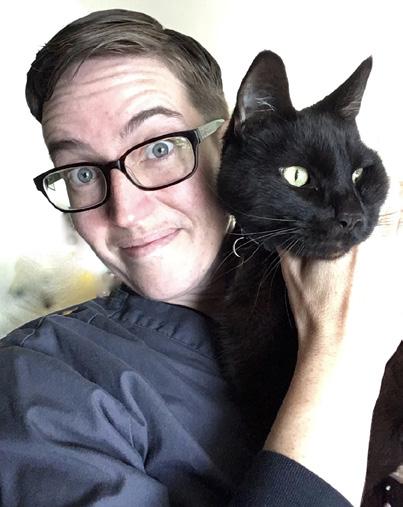
Owner: Robin Cohen
Nominating Organization: Helen Woodward Animal Center

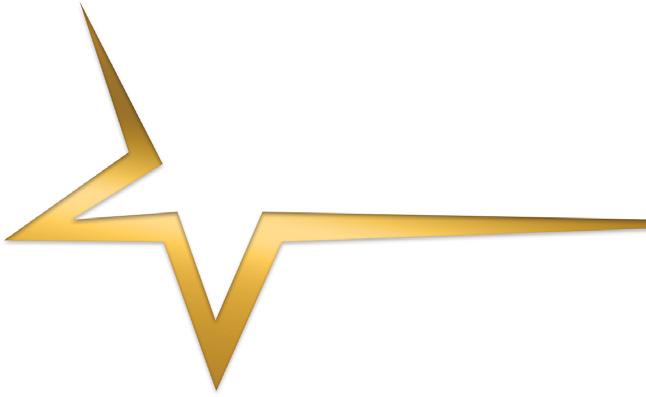
Robin Cohen, pet encounter manager at Helen Woodward Animal Center, first met Balonee in February of 2016, when he had been found abandoned in a parking lot. The Center provided veterinary care to the 11-year-old Pomeranian, who was under-vaccinated and had severe dental disease and spondylosis.
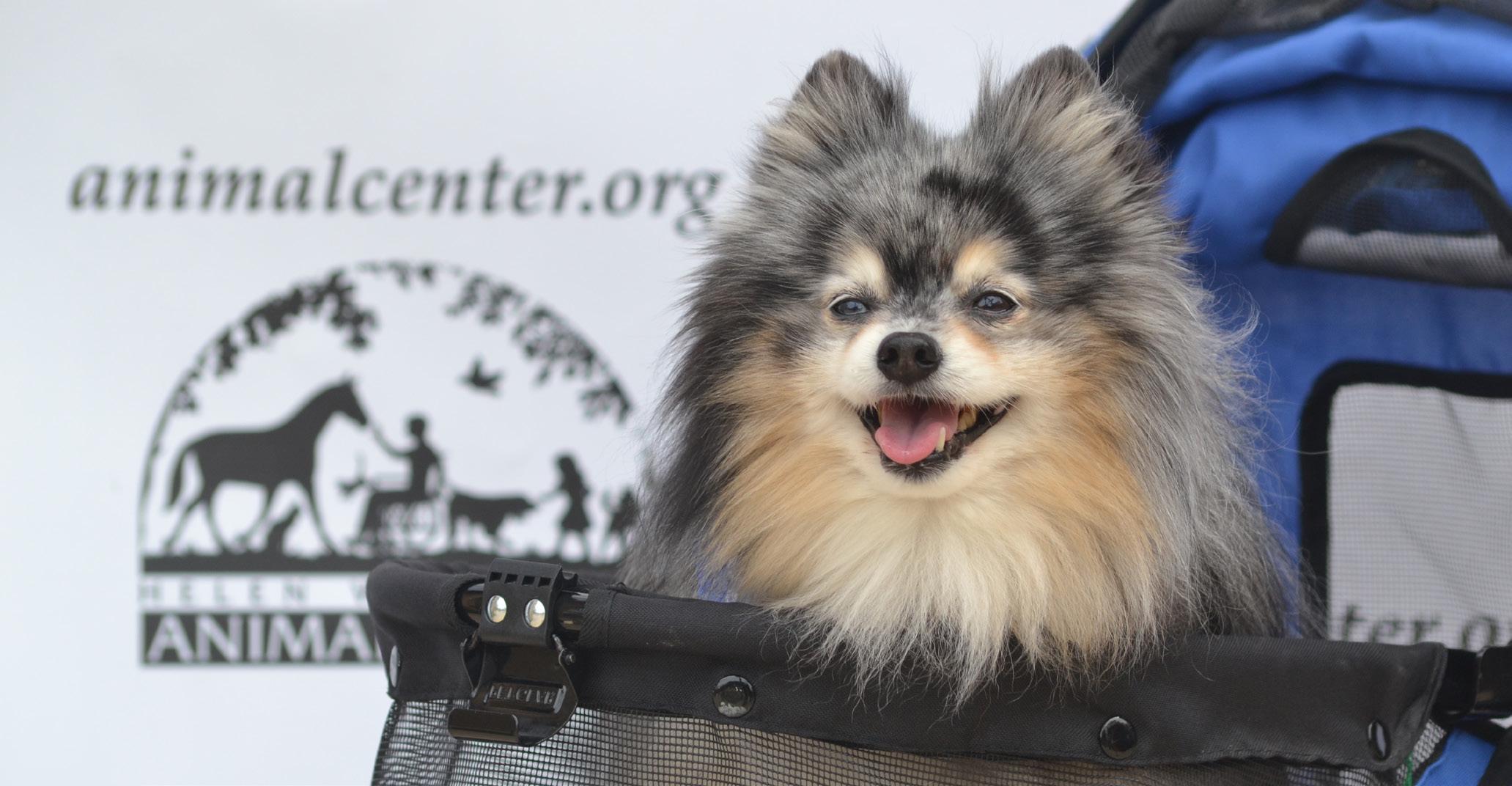
Robin agreed to foster Balonee until his health improved enough to be adopted. But within a few weeks, Robin had fallen in love with the Pomeranian and decided to adopt him herself. Although it usually takes months to train therapy dogs, Balonee’s naturally sweet, gentle demeanor helped him become a fully certified therapy dog within just one month of adoption.
Balonee initially visited nursing facilities and memory care units but quickly moved on to assisting people of all ages. He partook in almost 800 Pet Encounter Therapy (PET) visits, meeting clients ranging from youth in foster care, seniors, veterans, hospice patients,
those working to overcome addiction, homelessness, and/or chronic unemployment, and others.
Balonee’s specialty was showing people unconditional love—something that often meant the world to those he visited. One example of his healing magic was his work at a residential treatment facility for veterans, which the Center would visit twice a month. Some of the more impenetrable veterans would only come down to the visiting room if they knew Balonee was there, finding moments of peace as they held the Pomerarian in their arms and pet his fluffy cloud of fur, before heading back to their rooms. His visits came to mean so much to the residents that they would decorate the white board with welcome messages to “Balonee and his friends” before each visit.
Although Balonee passed away at the end of 2020, the countless hours he spent nurturing thousands of clients encapsulates the healing power and beauty of the human-animal bond.
Arica Cayton, RVT, VTS (CP-CF), for passing her Veterinary Technician Specialist exam in Clinical Practice. Arica currently works as the treatment supervisor at Cardiff Animal Hospital and Wellness Center in San Diego. She is also the current San Diego County Veterinary Medical Association Affiliate Chapter Representative and a proud RVT member of the CVMA. Amazing job, Arica!
Mike Harrod, DVM, for publishing his children’s book called “Farrah Farhopper the Faraway Flea,” which debuted as Amazon’s #1 New Release in Children’s Bug & Spider Books. Dr. Harrod, who previously served on the CVMA’s Feline Fibrosarcoma Task Force, wrote the book to educate his clients on fleas during his early years in small animal veterinary practice. Once he retired, Dr. Harrod finally pursued getting his book illustrated and published. Thank you for bringing veterinary education to a younger audience in such a fun way, Dr. Harrod!
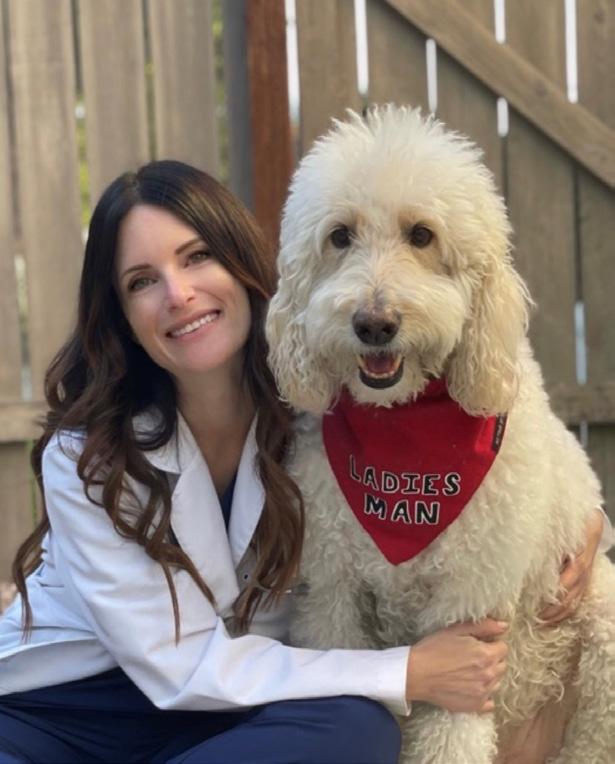
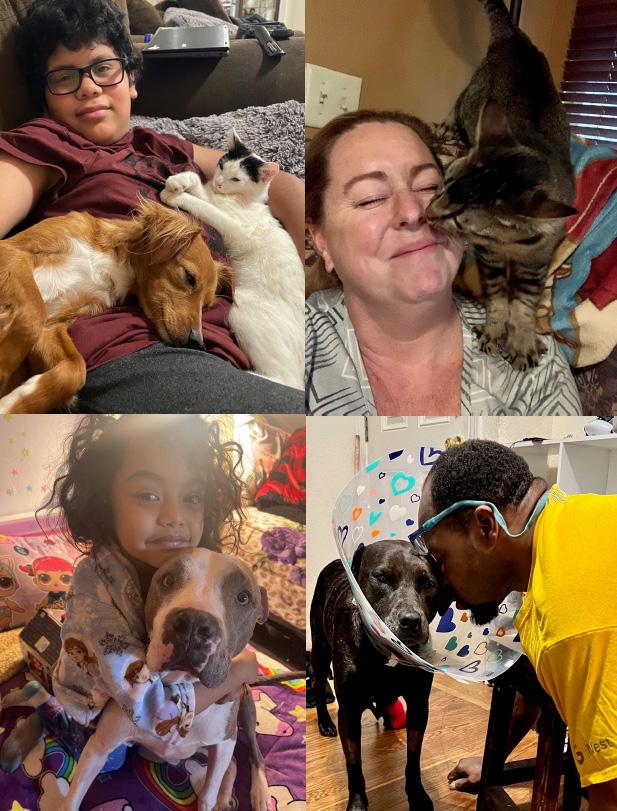

Julie Smith, DVM, for founding SAGE Compassion for Animals (SAGEC4A), a nonprofit that helps fund veterinary care for pets in crisis within the San Francisco Bay Area. Despite the many obstacles generated by the COVID-19 pandemic, the group has been able to award 55 grants totaling over $135,000 to families with animals in medical crisis, successfully preventing suffering and euthanasia. Dr. Smith created the non-profit as a way to give back to her community after a career spanning 25 years as a veterinary surgeon and practice manager. To Dr. Smith and everyone at SAGEC4A, thank you for helping families stay united with their beloved animals!

Emily Talcott, DVM, for being recognized as a “pandemic hero” at Orange County’s Celebration of Heroes. Dr. Talcott, a small animal veterinarian in Fullerton, spent her nights and lunch breaks helping over 100 senior citizens and essential workers schedule their initial COVID-19 vaccinations at a time when appointments and vaccines were limited—all while working full-time and raising two young boys. Dr. Talcott, thank you for selflessly protecting the people around you… you are a source of pride and inspiration to the veterinary profession!
Do you have some great news that you’re just itching to share, whether it’s a recent engagement, an exam you passed with flying colors, or something your staff accomplished that made you feel extra proud? Don’t be shy—we want to shout your good news from the rooftops! Send Taryn DeOilers a message at tdeoilers@cvma.net along with a photo of yourself, and you might be featured in the next issue of “Something to Wag About.”
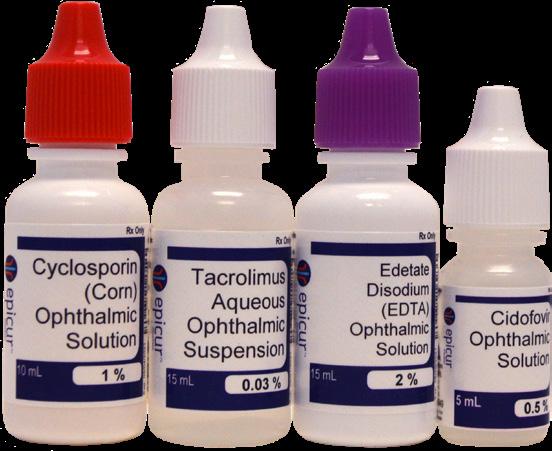
Traditionally compounded medication from a 503B MANUFACTURER
Follow cGMP, the same regulations used by pharmaceutical companies
To order, call 888.508.5032
The CVMA extends our sincere sympathy to the friends and family of those remembered.
Dr. Jack Gregg, a CVMA Life Member, passed away on December 4, 2021. Dr. Gregg earned his DVM degree at UC Davis. After graduation, Dr. Gregg managed Gregg Animal Hospital, a small animal practice in La Habra, California that his father established in 1962. Throughout his over-50-year career, Dr. Gregg was involved in organized veterinary medicine both at the state and national levels.
Dr. Fred Groverman, a CVMA Life Member, passed away on February 12, 2022. Dr. Groverman received his DVM degree from UC Davis, after which he became a beloved veterinarian in the Cotati, California community. Dr. Groverman’s involvement in agriculture was extensive, including sitting on the Sonoma County Fair Board for 10 years, being a founding member of the Farm Bureau’s Young Farmers and Ranchers, getting inducted into the Farm Bureau Hall of Fame, and receiving various awards, including lifetime achievement awards from the Sonoma County Harvest Fair and the Santa Rosa Chamber of Commerce.
Dr. Thomas James Thompson, a CVMA Life Member, passed away on November 20, 2020. After serving with the U.S. Coast Guard, Dr. Thompson graduated from the UC Davis School of Veterinary Medicine in 1965. He worked at the Richmond Veterinary Hospital in Richmond, CA, which he later purchased and operated until 1992. Dr. Thompson was involved in both the CVMA and the American Veterinary Medical Association.
In memory of deceased members, the CVMA makes a donation to the California Veterinary Medical Foundation. Its mission statement reads: “Nurturing kindness, education, and well-being for all animals, people, and the environment.”

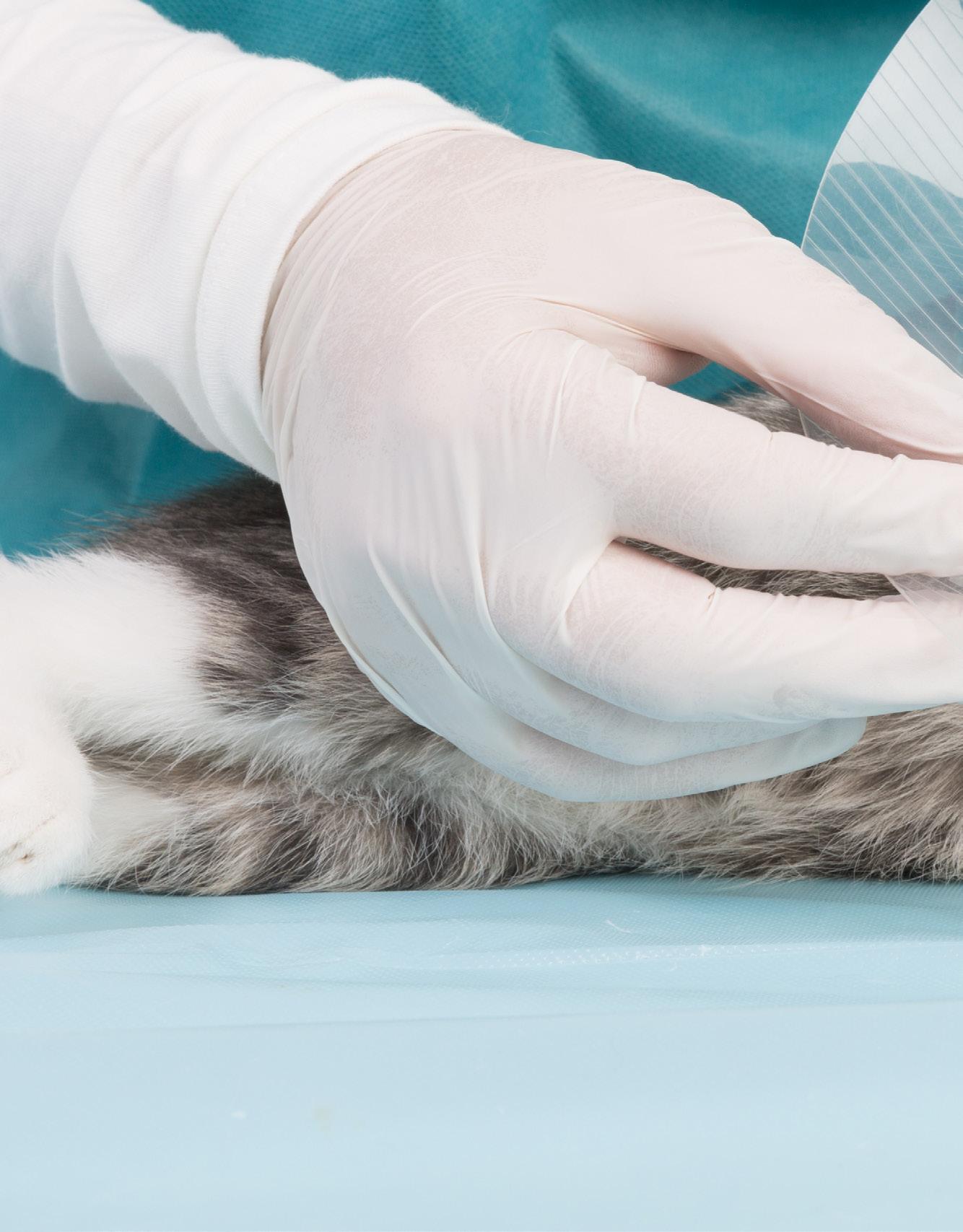 By Michelle O’Neill, Sr. Risk Advisor, Preferred Employers Insurance
By Michelle O’Neill, Sr. Risk Advisor, Preferred Employers Insurance
Over the past six years, animal bites and scratches have comprised at least 63% of veterinary staff injuries in Preferred Employers Insurance’s (PEI) workers’ compensation program. All too often, bite and scratch injuries in veterinary practices are viewed as “just part of the job” and not paid much attention. But without proper medical treatment, they can become infected, leading to pain, loss of work, and extensive medical treatment. Bite and scratch injuries can range from superficial scratches to puncture wounds and deep, open cuts. Bite wounds can also result in crush injuries. Wounds that break the skin can cause serious infection, including osteomyelitis (infection of the bone), septic arthritis (infection of the joint), or septic synovitis (infection of a synovial structure like a tendon sheath). All bites and scratches should be reported to a supervisor or manager, even if considered minor. Due to the risk of serious injury, consider seeking medical treatment for all bites and scratches.
Because patients experiencing pain or anxiousness oftentimes will lash out, every practice should have a focused bite and scratch prevention plan incorporated into their safety program. The plan should include management responsibilities, employee responsibilities, training, standard operating procedures (SOPs), facilities design, an approved tools and equipment list, a periodic self-audit to measure effectiveness, and injury management elements.
Practice management is key to ensuring bite and scratch prevention is engrained in the practice’s culture.
Management responsibilities should include:
• Developing, distributing, and providing staff training on the practice’s bite and scratch prevention SOPs, and ensuring their implementation
• Educating staff on common behaviors associated with fear-based aggression
• Designing and equipping facilities to reduce or eliminate the situations that lead to bites and scratches
• Identifying and providing tools and equipment needed to prevent bites and scratches, including personal protective equipment
• Regularly auditing the effectiveness of the practice’sbite and scratch prevention procedures, training, facilities, tools, and equipment, and reviewing injury investigations and reports
• Developing and distributing injury reporting and medical treatment procedures to all staff
The bite and scratch prevention plan will not be effective without employees’ engagement and participation.
Employee responsibilities should include:
• Attending and participating in training
• Following established SOPs and safety rules
• Reporting injuries to management
Even though veterinary staff encounter the risk of being bitten or scratched nearly every day, they can be equipped to care for themselves and their patients with a reduced risk of injury. Veterinary staff should be reminded that keeping yourself safe benefits you and your patient!
Bite and scratch prevention training should lay a foundation for how to read and respond to the normal behavior and responses of cats, dogs, and other patients to stressors like fear and anxiety.
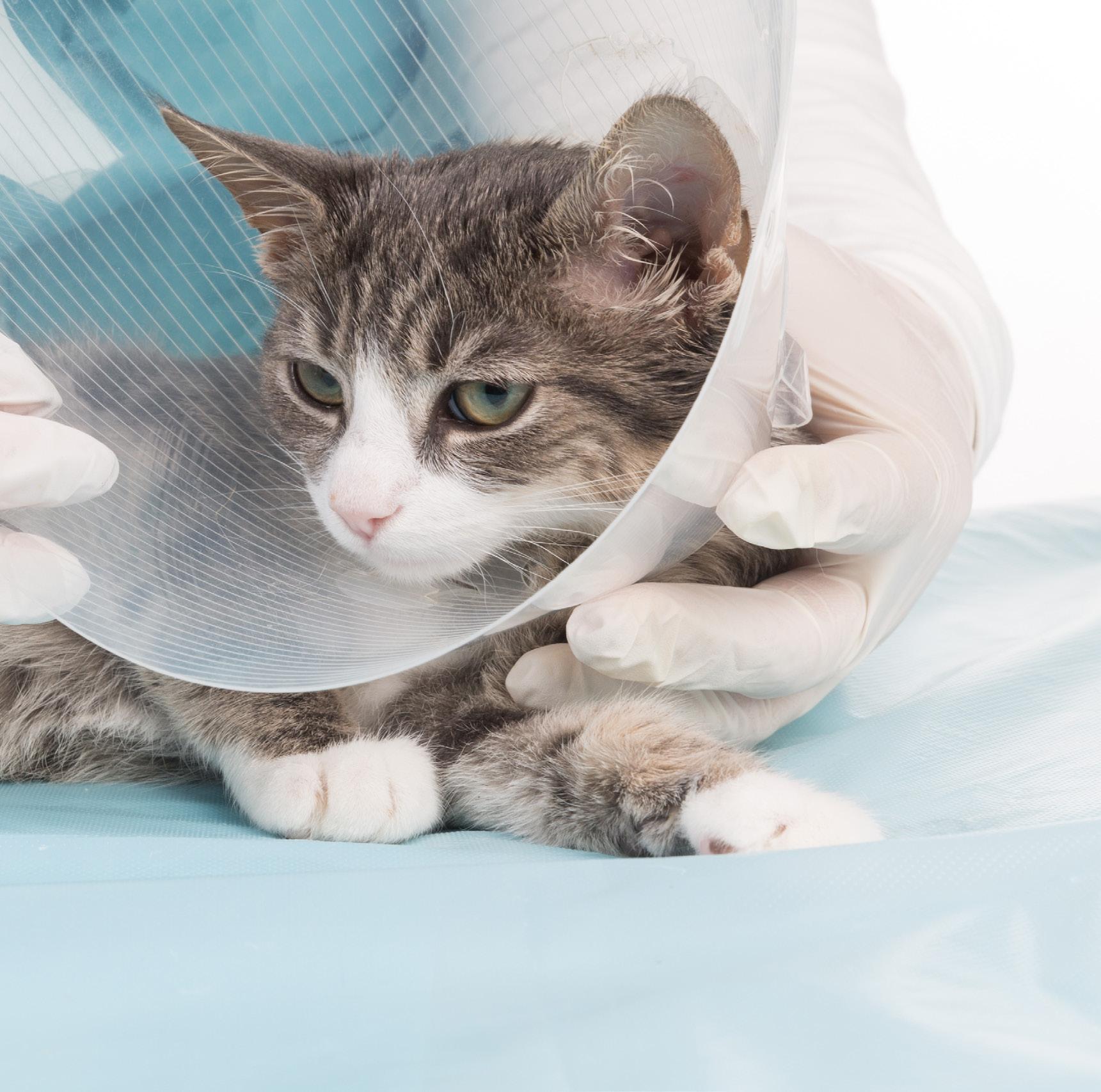
Training should include:
• Assessing and re-assessing a patient’s anxiety level
• Implementing proper animal handling techniques
• Choosing appropriate precautions or restraints, when necessary
• Identifying strategies to minimize animal fear and aggression
• Selecting and using appropriate personal protective equipment
Meaningful information to make these determinations can be found by:
• Reviewing and notating the patient’s medical records and kennel charts
• Discussing the patient’s anxiety level and behavior with the client prior to treatment
• Reading the patient’s body language
The training should also include identifying what specific precautions or restraints are required for moderate-to-high patient anxiety levels, including the use of:
• Treats
• Pheromone spray
• Blanket/towel
• Extra help from staff members
• Muzzle
• Sedation
• Alternate appointment schedule during a quieter time of the day
• Admitting the patient directly into the exam room
• Staff being present in the exam room before the animal patient comes in
• Providing medication to address anxiety prior to appointments

yme disease is a vector-borne disease caused by the bite of a tick that is seen in dogs, humans, horses, and cattle. These are the only two Ixodes spp ticks found in the United States that are capable of transmitting the disease.
The causative agent for Lyme disease is Borrelia burgdorferi, a spirochete bacterium. These are Gram-negative, motile, cork-screwshaped, fastidious, microaerophilic bacteria that grow at body temperature in broth media. The Borrelia burgdorferi bacterium is transmitted through the bite of a tick, but ticks are not the reservoir species for this disease and do not themselves cause the disease. The reservoir species for the bacteria are animals such as voles, white-footed mice, western gray squirrels, shrews, chipmunks, and deer. All three life-stages of the Ixodes spp ticks— the larvae, nymphs, and adults—feed on the reservoir species animals and can become infected. Transmission of the Borrelia burgdorferi bacteria requires 24–52 hours of attachment for the tick, with peak transmission occurring between 48–52 hours.
Most dogs exposed to infected ticks develop the subclinical disease, with few if any signs seen by owners. The signs seen by owners can include an abrupt onset of lethargy, fever, lameness, and swollen, warm joints. The lameness may be confined to a single joint or shifting, moving from one joint to another. With advanced disease, chronic, intermittent arthritis, heart disease, neurologic disease, and renal disease may be seen.
Lyme disease diagnosis is often based on clinical signs, tick exposure history, and
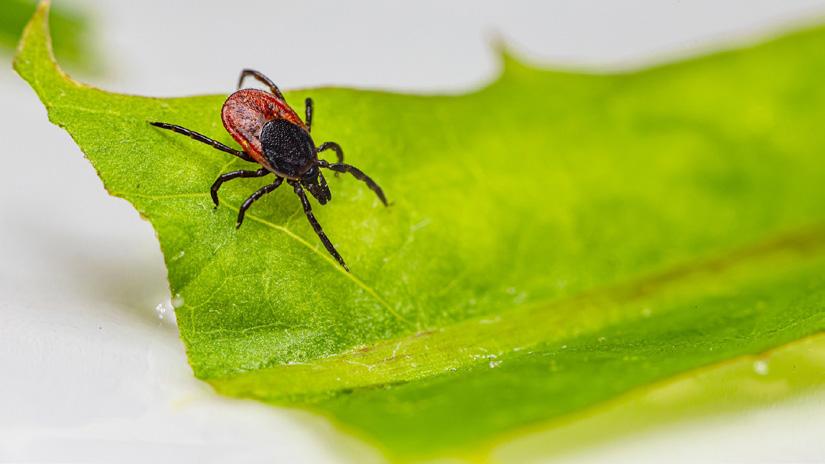
a positive antibody test. Tests looking for antibodies to Borrelia burgdorferi are available in immunofluorescence assay (IFA), ELISA, Western blot, and PCR formats. The ELISA tests are available for in-house screening. The Western blot is viewed as the gold standard and would be used if there were disagreements between the ELISA test and the clinical presentation. For dogs showing active signs of disease, joint cytology can be performed.
For dogs with a positive ELISA test and clinical signs of illness, treatment with antibiotics is indicated. Doxycycline is the drug of choice, CAPC recommends 10 mg/kg q 24 hours for 30 days. For dogs with significant pain associated with the joints, NSAIDs or opioids can be used; glucocorticoids are not recommended.
A reported 90% of exposed dogs never show any sign of disease. For those presenting with clinical signs, recovery is usually relatively rapid once antibiotics have been started.
The primary means of preventing infection with Borrelia burgdorferi are avoiding tickinfested areas, using topical acaricides in endemic areas, and daily inspection and removal of ticks from the dog. Environmental controls can include cutting back the brush and grass around the yard that would be used by questing ticks looking for a blood meal. For dogs at high risk, in addition to using acaricides and environmental controls, vaccines are available.
While dogs infected with Lyme disease do not pose a zoonotic risk to humans1, an increased incidence of positive dogs can also be used as an indicator species for increased surveillance in humans in the area.
1. Sykes, J. Lyme Borreliosis in: Canine and Feline Infectious Diseases. St. Louis, MO. Elsevier; 2014: 487-494.
2. Romich, JA. Tick-borne Bacterial Zoonoses in: Understanding Zoonotic Disease. Clifton Park, NY. Delmar Learning; 2008: 252-261.
3. Companion Animal Parasite Control (CAPC). Lyme Disease for Dog. https://capcvet.org/guidelines/lyme-disease accessed Oct. 28, 2020.
Ann Wortinger is a 1983 graduate of Michigan State University who has received her specialty certification in Emergency/Critical Care, Small Animal Internal Medicine, and Nutrition. In 2020, she attained her Elite Fear Free® certification. Ann has worked in general, emergency, and specialty practice, education, and management and has mentored over 20 fellow Veterinary Technician Specialists. She is currently an instructor and academic advisor for Ashworth College’s Veterinary Technology Program.
4. Litman, MP. Gerber, B. Goldstein, RE. et al. ACVIM consensus update on Lyme borreliosis in dogs and cats in: Journal of Veterinary Internal Medicine. 2018: May-June; 887-903.
5. Lyme Disease in Infection Prevention and Control Canada. https://ipac-canada.org/lyme-disease.php accessed Oct. 28, 2020.
6. Straubinger, RK. Lyme Disease (Lyme Borreliosis) in Dogs in: Merck Manual Veterinary Manual https://www.merckvetmanual.com/dog-owners /disorders-affecting-multiple-body-systems-of-dogs/ lyme-disease-lyme-borreliosis-in-dogs accessed Oct. 28, 2020.
7. CAPC Incidence map https://capcvet.org/maps/#2020/all/lyme-disease/dog/united-states/

This year has proven to be challenging for EHV-1 detections and Equine Herpesvirus Myeloencephalopathy (EHM) in California’s equine populations. Multiple concurrent outbreaks have challenged not only state animal health officials but equine veterinarian responders, event managers, and horse owners throughout the state. The cooperation and assistance from the veterinary and equine community during these outbreaks has been remarkable, and the California Department of Food and Agriculture (CDFA) highly values the support and expertise from California’s equine veterinarians as integral parts of statewide emergency responders to animal disease incursions and disasters.
EHV-1 is an endemic viral pathogen in equine populations, and most horses have been exposed to this virus at a young age. As a member of the herpesvirus family, EHV1 can remain latent indefinitely within host neural and lymphoid tissues following primary infection, and triggers for reactivation are not fully understood, but external stressors like transportation and rigorous competition schedules play a role. Vaccination can decrease severity of clinical signs and decrease viral shedding, but no product is labeled against neurological manifestations of EHV-1 infection. While there are correlations between EHV-1 infection and EHM, such as high viral loads, viremia (virus in the bloodstream), and immune-compromising conditions, there is no current definitive means to accurately predict if a horse with active EHV-1 infection will become neurological. Analysis of previous multiple EHM outbreaks has clearly demonstrated that both the “neuropathogenic (NEHV-1)” and “non-neuropathogenic (wild-type)” EHV-1 strains are both capable of causing EHM-related outbreaks.
CDFA’s regulatory authority is defined by the conditions on California’s reportable disease list, which is annually reviewed by state animal health officials, veterinarians, subject matter experts, and health advisory committees. Due to the endemic nature of this viral disease, CDFA mandatory quarantines are limited to specific disease incursions that carry the highest risk of spreading disease, which includes EHM, EHV-1 infection with neurological manifestations. EHM was placed on California’s regulatory conditions list as a result of equine industry concerns, while EHV-1 infection without neurological signs—which can include clinical symptoms like fever, upper respiratory signs, or a positive EHV-1 lab result in a horse with no
clinical signs—is a monitored condition in California that does not mandate a state quarantine.
EHM disease control measures applied by CDFA during these recent incidents include mandatory quarantine of premises with confirmed EHM, and mandatory quarantine of any positive EHV-1 detections associated with known or possible exposure to an EHM case within 14 days.
CDFA has also been supporting veterinarians and facility managers with voluntary quarantines at premises where there are non-neurological EHV-1 detections not directly epidemiologically linked to an EHM case. A joint CDFA-USDA letter was distributed to accredited equine veterinarians recommending issuance of equine certificates of veterinary inspection follow equine event best practices recommendations. A letter of caution recommending temporary postponement of equine events and non-essential movements was also issued by the State Veterinarian and widely distributed to equine stakeholders.
It is also important to re-emphasize that EHV-1 and EHM response policies, both in California and throughout the U.S., are disease control programs, not eradication programs. Our understanding and response to this virus continues to evolve, and recent high-profile incidents have challenged the equine industry and researchers to better understand and mitigate transmission risks, and to create informed and effective management policies. Later this year we look forward to hosting a California Equine Summit for practitioners, researchers, industry representatives, and state animal health officials with special emphasis on EHM and EHV-1 response, and developing EHM task force initiatives with national and international equestrian federations, subject matter experts, and equine event managements.
Equine veterinarians and equine owners share in the responsibility of disease control for challenging endemic disease agents like EHV-1, and CDFA supports the equine industry in continuing to take this responsibility seriously on a day-to-day basis, not just in the face of an outbreak.
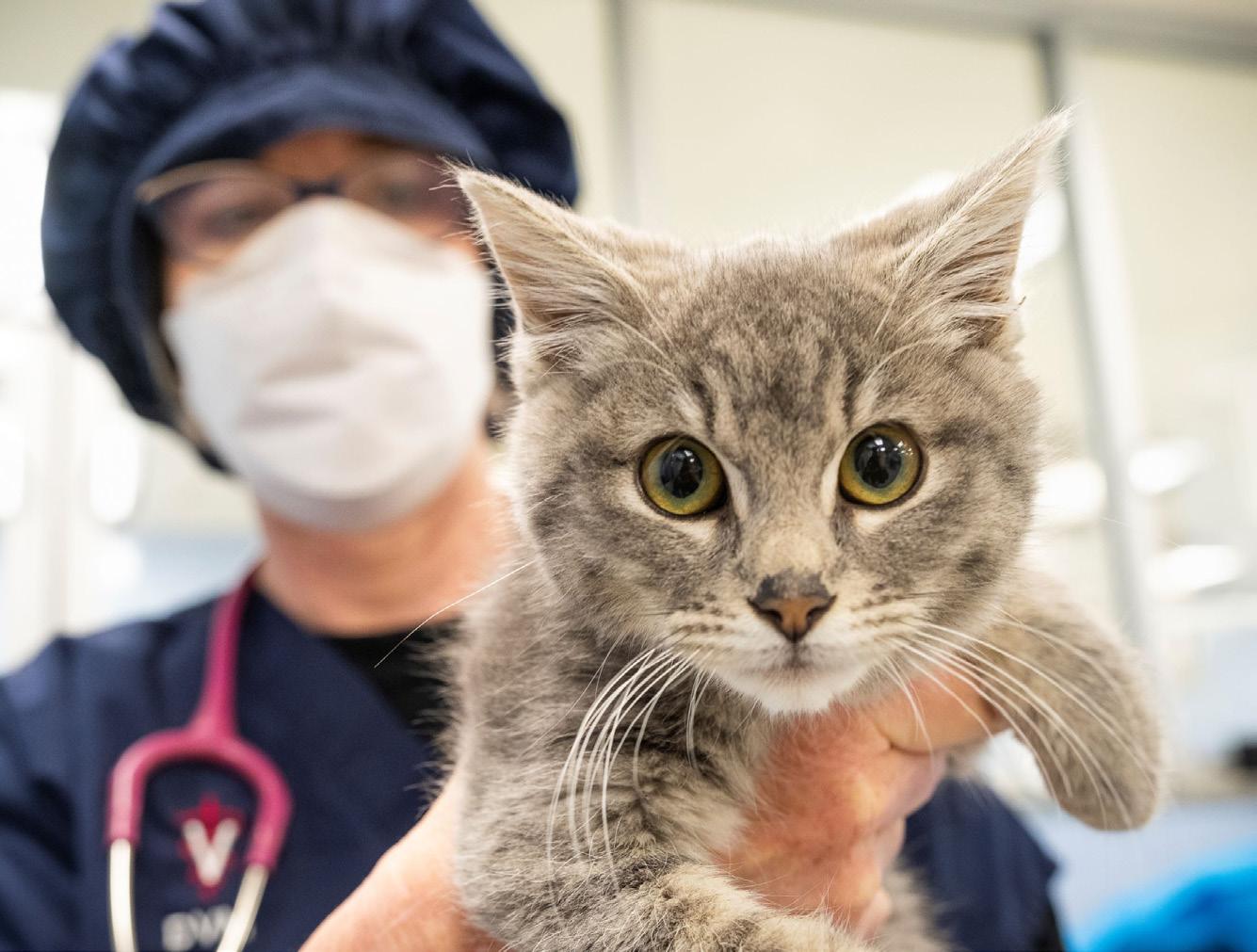
Athorough and well-rounded veterinary education can involve dozens, “if not hundreds,” of different facets—learning compassionate care is one of them. A new service at the UC Davis School of Veterinary Medicine aims to assist animals, people, and organizations in need, while gaining training opportunities for its students.
With overpopulated shelters and underserved populations throughout Northern California, animals can often go untreated. To better serve these communities and administer the needed care, the school’s veterinary hospital recently added the Access to Care Service to its lineup of specialty and community care services.
While many faculty members and students have already been performing these activities for years, those programs now have an umbrella to better guide them and more efficiently administer their services.
The Access to Care Service is led by Service Chief Dr. Kristin Jankowski along with Drs. Jonathan Dear, Elizabeth Montgomery, and Karen Vernau, who mentor DVM students in a variety of community-based veterinary care outlets. While UC Davis has operated some of these organizations for years to decades—such as the Knights Landing One Health Clinic (KLOHC), Mercer Clinic for Pets of the Homeless, Davis PAW Clinic, and Covelo Clinic—the new service is designed to bring together those programs with an existing tie to the veterinary hospital. This will start with KLOHC, treatment for cats burned in wildfires, Fracture Program, the Orphan Kitten Project at UC Davis (OKP), as well as aspects of the Community Surgery Service, a required clinical rotation where students gain valuable hands-on experience in spays/neuters, mass removals, and other minor surgeries.
All in all, the service aims to collaborate across these existing community outreach programs, help elevate and unify that work, and broaden the base of access to veterinary care at UC Davis. The faculty is currently establishing partnerships with the school’s Development Office to help advance these activities through philanthropic support and proposes to create an elective clinical rotation through the service for fourth-year students.
Recently, the service had a busy week, seeing seven kittens with a variety of ocular and musculoskeletal issues. The Tehama County Animal Care Center, a small shelter in Red Bluff, was struggling for space with
an influx of kittens. The ones that needed immediate medical attention were brought to UC Davis and taken into rescue by OKP and the Yolo County SPCA.
The kittens fulfilled a need for teaching cases generally not seen in the students’ specialty service clinical rotations. One of the kittens suffered humeral and femoral head fractures that provided training for orthopedic surgery residents and students through the Fracture Program as well as students in the community surgery rotation. Another kitten had an infected eye that required removal, which was done through the community surgery program, as well as treatment for a rolled-in lower eyelid. The kittens were all spayed/ neutered, microchipped, and vaccinated by students on rotation in the Community Surgery Service.
Two of the seven kittens have already been adopted. Following the completion of their care at UC Davis and fostering by students, faculty, and staff, the remaining five kittens will be adopted through OKP and the Yolo County SPCA.
“This was a great example of multiple Access to Care Service efforts at UC Davis working together to provide great opportunities for the kittens, the students, and the residents,” Dr. Jankowski said.
When veterinary medicine students arrived on the WesternU campus last spring to take final exams, it was for many an eerie occasion. The college had been almost empty much of the 2020–2021 academic year, courtesy of the pandemic, and students cautiously moved through the quiet hallways en route to their exam rooms.
Greeting students were welcome messages of encouragement, thanks to the Student American Veterinary Medical Association’s (SAVMA) Wellness Committee:

“You Got This!,” “You Can Do It!,” or “You’re So Close!”
Students also were given the chance to write their own messages to their classmates, letting each other know that they were thinking about them and were invested in their well-being.
“Students really appreciated it, especially because last year we were completely virtual,” said Breanna Aguilar, DVM 2024, current co-chair of the Wellness Committee. “It helped them remember that we’re all here for each other.”
While SAVMA focused on “Wellness Week” during the exam period last year, the organization is taking a broader approach for the current academic year. SAVMA has spread out its work throughout the semesters, making available more mental health resources. SAVMA members continued to provide snacks and coffee during exam weeks, but also distributed face masks to students and offered meditation sessions at various times.
A long-standing program from the Wellness Committee known as “Big/Little” pairs first-year students with secondyear students, helping incoming students navigate their first year at WesternU. That program has become particularly useful for many students as they integrate themselves into the hybrid education system demanded
by the pandemic. There’s also a peer-to-peer support program, where volunteers serve as “mental health buddies.”
“We pair people to give them a little extra support,” explained Katrina Billote, DVM 2025, the other co-chair of the SAVMA Wellness Committee.
SAVMA members are determined to strengthen human connections. Down the road, SAVMA Wellness Committee members hope to add in-person events if COVID-19 subsides. There may be get-togethers or lectures featuring experts from Not One More Vet or the National Alliance on Mental Illness, two organizations involved in strengthening mental health.
“We’re trying to do anything that will boost morale,” explained Breanna. “Not just [during] exam week, because we’re stressed out throughout the year. We want to give people pick-me-ups throughout each semester.”
Place your ad in the Career Center at cvma.net. There are two options for classified advertising:
1. Online advertising
2. Online and in one issue of the California Veterinarian
CVMA Members NonMembers
*Price includes the first six lines of text. Each additional line is $10/$11 for non-members. A line consists of approximately 50 characters.
**If you wish to place a print ad only, contact Laura Phillips at 916.649.0599 or classifieds@cvma.net.
Online only
30 days online $149 $199
60 days online $249 $299
90 days online $349 $399
Online and in one issue of the California Veterinarian
60 days online + one issue of the California Veterinarian $299 $349
90 days online + one issue of the California Veterinarian $399 $449
Resume— Post a confidential resume. Go to cvma.net. Click on the Resources tab then Classifieds in the right menu to get started.

Ad — Place a confidential ad by creating an anonymous email address and using it when posting your ad.
If you have any questions, please contact customer service at 860.437.5700, clientserv@yourmembership. com, or classifieds@cvma.net.
Issue
Jan/Feb
March/April
May/June
July/Aug
Sept/Oct
Nov/Dec
Deadline
December 5
February 5
April 5
June 5
August 5
October 5
If your ad is received after the deadline, it will go into the following month’s California Veterinarian. After the deadline, the CVMA cannot alter or cancel ads. The CVMA reserves the right to edit copy and does not assume liability for contents of classified advertising. Prices subject to change without notice.
Veterinarians
Opening available for associate in a well-established small animal practice. We have been in operation for over 30 years and are well situated in the heart of the San Francisco Peninsula. Our staff has been here long term with little turnover. We are well equipped and very progressive. Equipment includes laparoscopy, rhinoscopy, cystoscopy, endoscopy, and video otoscope. Surgical suite is equipped for orthopedics and advanced soft tissue surgery. Mentorship is available and encouraged at our practice. TPLO, fracture repair, minimally invasive surgery including laparoscopic spay are part of our routine caseload. Digital radiography (Sound) is used with monitors for viewing throughout the hospital. There is full in-house lab and pharmacy on site. Doctors enjoy a stable staff, standard hours, limited weekend hours, and a stable appointment schedule with ample time to work up cases and develop relationships. Both new and experienced graduates are welcome to apply. Those that are seeking to grow and develop their medical and surgical skills are also encouraged to apply. Full medical, dental and vision is covered through Kaiser. We offer CE, paid time off, and IRA retirement benefit. Email doculla1@gmail.com.
New Listing NCTLT5 Live and work in one of California’s most desirable areas. Now available is a small animal practice located in beautiful Lake Tahoe, CA. Everyday will feel like a vacation. Lake Tahoe and the surrounding Sierra Nevada Mountains offer incredible recreational opportunities. Lake Tahoe’s prestigious reputation is centered around its world class ski resorts and picture perfect lake. The area offers a great mix of recreation, tourism and thriving businesses. Lake Tahoe offers incredible shopping, great dining, and familyfriendly events. The area is accessible through Interstate 80 making it easy to travel in and out of the area. Its only a short drive to Reno, Nevada to the east or head west to Sacramento in two hours.

The practice was established by the owner in 2003 and is in a leased 3,840 sq. ft. facility on 1.25 acres. The facility was built in 1978. Significant remodeling was completed in 2010 to bring the facility up -to-date. The practice currently employs 1 relief vet, part time. Practice hours are Monday thru Friday and it has a robust boarding business that accommodates pick ups and drop offs on the weekends. Revenue growth has been steady for the past few years. 2021 gross was $1,277,286. This practice has high cashflow, and is projected to provide the buyer with over $350,000 in after debt income. Plenty to live well in the area and even hire another doctor. Price: $1,100,000
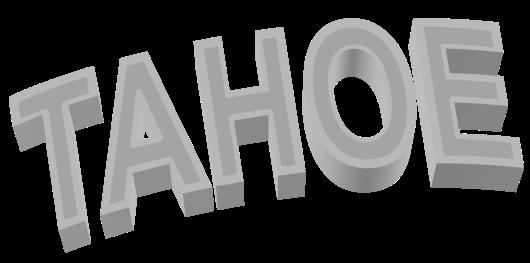

See other available listings at www.simmonsinc.com
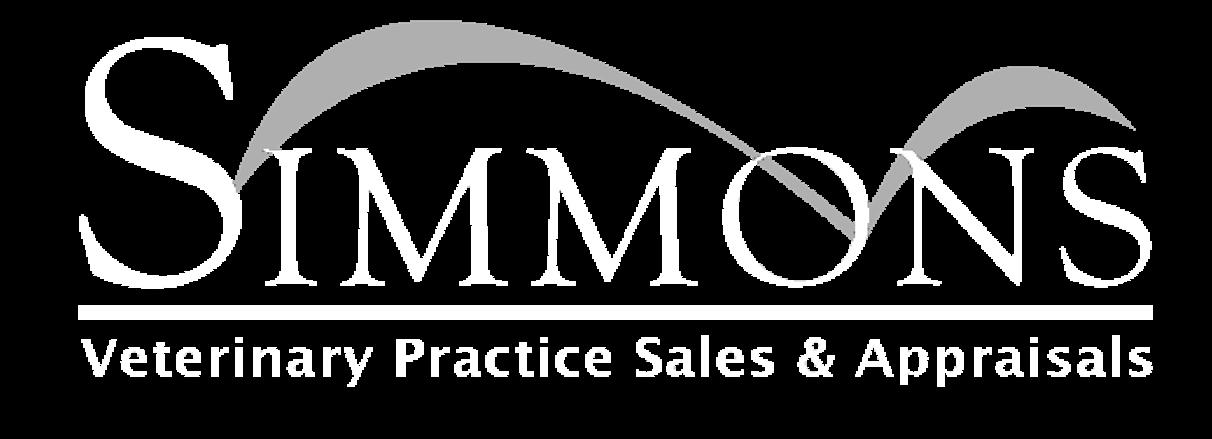
Nestled between the vineyards and the redwoods in beautiful Sonoma County sits the Animal Hospital of Cloverdale. We are an independent locally owned 2 doctor small animal exclusive hospital in search of a full or part time compassionate, enthusiastic, hardworking veterinarian. We provide general surgery, medicine, ultrasound, digital radiology, dentistry, full in-house lab, and more. Our mission is to provide loving and quality care for our patients and clients. Competitive salary based on experience with monthly production bonus, matching IRA (3%), 100% employer paid health insurance (Kaiser), CE stipend ($2,000), 3 weeks paid vacation. No after-hours emergency or weekends. Come work with our highly trained staff (multiple RVT’s) in a family like atmosphere! New (mentorship provided) or experienced veterinarians welcome. Contact Matt at ahocinc20@gmail.com.
Animal Medical Center (AMC) is seeking a full time, enthusiastic Small Animal veterinary associate. Our practice is located in a fabulous foothills area of Northern California. The Lake Tahoe area is about an hour drive to the east, with Sacramento less than a 30-minute drive to the west and the SF Bay Area another 1.5 hours beyond. Outdoor activities are plentiful. World class hiking, kayaking, mountain biking, swimming, fishing, and extensive horseback trail riding opportunities are readily available. Metropolitan amenities also abound, with live concerts, internationally known entertainers, and fine dining within an easy drive. We are an AAHA accredited practice. We are a busy practice dedicated to providing high quality medical care. Our hospital has excellent diagnostic equipment (both digital dental and body radiographs, ultrasound, a comprehensive in-house lab, and more to come) and a great RVT support staff. If you are a positive team player and enjoy a great caseload, continuity with clients and patients, good equipment to work with, and want to practice in a small animal setting, then you just may be the doctor we are looking for!
Compensation package is based on a guaranteed base salary and a percentage of your individual production. Starting salary and percentage amounts are based on your education, experience, ability and the number of days per week that you desire to work. Our fringe benefit package includes assistance to attend CE programs, paid vacation, holiday, sick leave, and CE attendance days, plus health insurance contribution and an employer match to a retirement plan. Email cbullock@thatsmyvet.com.
At Arroyo Veterinary Clinic, we believe that client experience is the key to our success. For over 50 years, our AAHA Accredited hospital has been providing high-quality, compassionate pet care, and we have come to know our clients as our own family. Arroyo Veterinary Clinic is a non-corporate and progressive veterinary practice, providing team members with an excellent work-life balance. To further improve our client experience, we are in the process of building a new stateof-the-art facility, to be completed by next year. We are excited to add an Associate Veterinarian like you to our team. We are looking for someone who has a passion for building a trusting relationship with clients, colleagues, and our community while advancing their careers with us. Our veterinarians set the tone within the hospital’s technical and customer support staff and are responsible, like all team members, for fostering cohesion and motivation within the group. Each veterinarian is supported by one RVT and two Tech Assistants. This set-up allows the freedom for our veterinarians to do “doctor stuff” and go home on time to enjoy themselves with family and friends. Location: Our small animal practice is located in the vibrant San Francisco East Bay! In the tight-knit community of San Lorenzo, our approach is central to the Bay Area’s many recreations! Benefit from small-town relationships, quick access to dozens of popular hiking trails and parks, excellent restaurants, entertainment, and only 30 minutes from San Francisco. Take a 3-minute drive from the clinic to the Hayward Shoreline walking trails! A beautiful place to spend a refreshing lunch break in the fresh bay breeze! If you want choices, look no further than the East Bay! Benefits: Our ongoing growth creates exceptional mentorship, professional development, and personal enrichment opportunities. Compensation is competitive and based upon experience. Special interests are always encouraged by continuous education opportunities. Other benefits include: Work-Life balance with flexible scheduling, closed major holidays; rotational weekends off
• Health insurance, including dental, vision, and chiropractic
• 401K retirement plan
• Continuous Education time off and stipend
• Paid time-off
• Generous employee & family pet discounts.
Practice Highlights:
• AAHA Accredited (featured in AAHA Trends publication - February 2016)
• 4 DVMs (including two residency trained specialists)
• 3 RVTs, additional 2 RVTs in-training, 1 DVM in-training
• Referral center for specialty dentistry, including RCT, crown restorations
• PRP joint treatments and Class IV Laser Therapy
• Ultrasound, Digital radiography with instant telemedicine reports
• Visiting inpractice specialists for radiology and ultrasound
• Dental radiography (for all dental)
• Advanced microscope with attached camera and monitor
• In-house IDEXX lab with CBC, CHEM, UA with Sedivue, Clotting Times (PT, PTT), Snap test reader
• Electronic Medical Records. We are proud to offer personalized medical care for our patient’s needs and our client’s expectations. Our team camaraderie is all-inclusive and wraps everyone with positive vibes. We invite prospective candidates with similar values to contact Paula with a resume at paula@arroyovetclinic.com.
4 DVM S.A. practice in West Santa Barbara County seeks exp DVM for great work-life balance (to $200K). Love veterinary work, but not veterinary offices? Vets Here provide high-quality medical care to the western Santa Barbara County area. We are a state-of-the-art mobile practice working out of Santa Ynez Valley/Newbury Park. Recently, a veterinarian we hired in August summarized the position, “I can make more money seeing 6-8 patients/day in the mobile van than I can work in a large LA clinic. I get to spend more time with the pet and the client. The vans are outstanding; they are nicer than some of the hospitals I’ve worked at. I love working here. Dr. Fanning is a great boss!” We are looking for a veterinarian with at least 1-year of experience to join our 4 DVM team. Please see our website: https://www.vetshere.com. About us: One tech and an assistant are in each mobile van; the vans are equipped with an exam area, separate surgery suite, doppler, pulse ox, digital x-ray both whole body and dental, microscope, anesthesia monitoring equipment. Flexible shifts: 4 10hr shifts/week or 5 8-hr shifts/week and time off if you need it. The pets are calmer and less traumatized especially the cats in the vans. No ER call. Great variety of cases. Four veterinarians are available to mentor and collaborate with. Many clinics are booked out 3 weeks and clients can get in sooner with our service. In between calls, while on the road, you can do callbacks; you can also do research as the van has WIFI. About you: Ability to do simple soft tissue surgeries (S&N, mass removals, and dentals) (we offer CE training), Flexible and adaptable, Enjoy clients, California Veterinary License, DEA License. Compensation and Benefits: Guaranteed base to $150K plus 20% production on everything; potential compensation to $200K. Health insurance monthly stipend, CE time off and stipend $2000, 401K after 1 year with 3% match, Relocation expenses to $5K, 2 weeks’ vacation. For more information, please send your resume to Victoria L Travis, MS, Travis Veterinarian Recruiters, victoria@veterinarianrecruiters.com, or call 720.535.6433. Please know all inquiries are confidential.
Registered Veterinary Technician
Under direction, provides routine paramedical services to animals in the care of Kern County Animal Control. Distinguishing Characteristics: This classification is responsible for providing paramedical treatment to animals. A Registered Veterinary Technician monitors the general health of the animal population at the shelter, administers emergency treatment, first aid and follow-up care to those animals in need.
Duties: Checks and monitors the general health of all shelter animals • Receives injured or sick animals brought to the shelter and makes preliminary assessments of their condition for veterinarian • Assists the Veterinarian with medical procedures; administers medications and immunizations • Assists the Veterinarian with surgical procedures; ensures that all equipment and instruments are operable and properly disinfected • Coordinates necessary medical information and assists staff in selecting animals suitable for adoption • Assists in training shelter staff on appropriate medical and euthanasia procedures • At the direction of the Veterinarian, assists or is responsible for collecting necessary laboratory or necropsy specimens for medical evaluation • At the direction of the Veterinarian, performs routine laboratory tests • Maintains medical records and files • Maintains inventory of all pharmaceuticals, equipment and necessary supplies • Provides expert witness testimony in court cases related to animal cruelty and neglect • Assists the public in claiming, obtaining and licensing animals • Maintains effective working relationships with other staff, county departments, agencies and the public • Performs other duties of similar nature as required. Employment Standards: Registration as a Veterinary Technician by the Board of Examiners in Veterinary Medicine to the State of California. A valid Class C California driver’s license is required upon appointment. Knowledge of: The Veterinary Practice Act with respect to designated tasks to be performed by an RVT; principles and practice of current veterinary medicine; animal diseases and their prevention, control and eradication; current veterinary practices and techniques relating to the treatment of injured animals; County, state and federal animal health laws and regulations; animal regulation procedures and problems; County customer service objectives and strategies. Ability to: Assist in providing surgical and medical services and care for a variety of well, sick and injured animals; assist in a high volume of sterilization surgical procedures; provide state-of-the-art, high quality animal medical services in the most efficient manner; establish and maintain cooperative and effective relations with those contacted during the course of work; prepare written reports, correspondence and other documents using a personal computer; communicate effectively orally and in writing; establish effective working relationships with management, employees, employee
representatives and the public representing diverse cultures and backgrounds; treat County employees, representatives of outside agencies and members of the public with courtesy and respect; exercise appropriate judgment in answering questions and releasing information; analyze and project consequences of decisions and/or recommendations. Supplemental: A background check may be conducted for this classification. All Kern County employees are designated “Disaster Service Workers” through state and local laws (CA Government Code Sec.3100-3109 and Ordinance Code Title 2-Administration, Ch. 2.66 Emergency Services). As Disaster Service Workers, all County employees are expected to remain at work, or to report for work as soon as practicable following a significant emergency or disaster. Contact Nick Cullen; Phone 661.868.7132 Email cullenn@kerncounty.com.
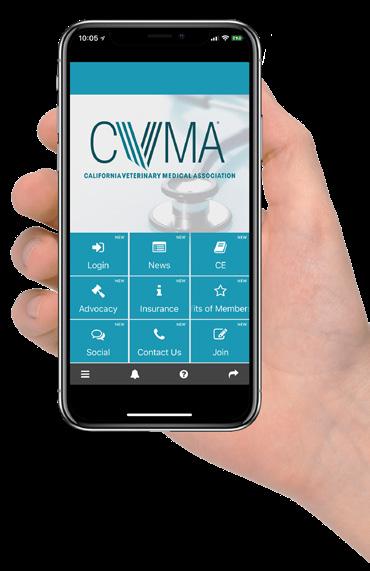
Thriving Marin Co. house call practice for sale. Licensed home clinic, surgery on the property with a spacious, upscale ranch house on 1/3 acre also for sale. High net in affluent suburbs. Mobile M/W/F, office visits/ procedures T/Th. Best of both worlds. Flexible hours, great variety, best work life balance. KenDSteele@comcast.net 415.451.4838.
1+ DVM, small animal practice in an upscale, rapidly growing community near Boise, Idaho. Well established and highly profitable with room for expansion. Contact email: whitebarkpine22@gmail.com.
Rapidly Growing, Well Established Small Animal Practice for Sale in Thousand Oaks, CA. Turn-key operation, recently remodeled and expanded. Owner retiring after 40+ years. 2700 square feet with lots of room to grow. Gross $770K with significant year over year gains. Owner willing to aid transition and the staff is talented and loyal and plans to stay if needed. Serious qualified inquiries only please to vetlabguy@gmail.com.
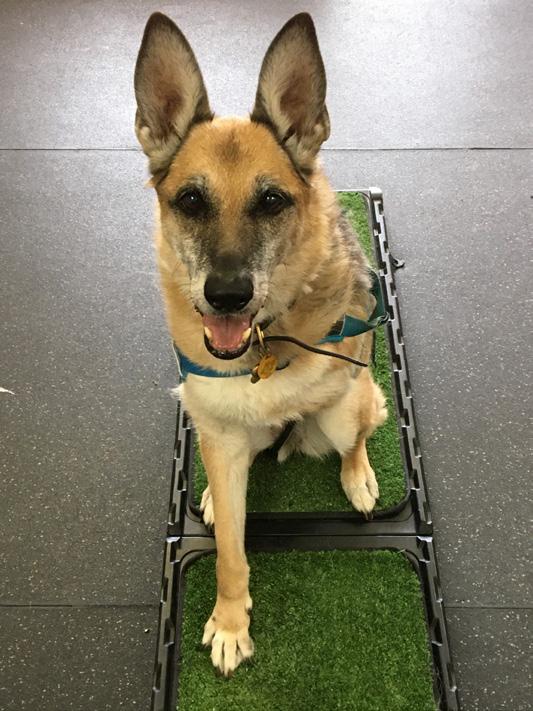
SAN DIEGO, EAST COUNTY: Near perfect climate. Leisurely drive to beaches and downtown. Growing population & highly rated school districts, along with endless outdoor activities, easy access to retail and commercial areas offers a highly desirable area in which to live and have a business. Well- established & very organized practice located in an active, poular shopping center. ~1,600 sq. ft. leased facility with 2 exam rooms, digital X-Ray and new ultrasound. 2021 Gross~$880,000. Exceptional cash flow of approximately 39%. N NEW LISTING CALL FOR PRICING!
SONOMA COUNTY: Approximately 1 hour north of San Francisco. Located in a quaint family-oriented community with outstanding climate and first-rate quality of life. Spacious facility is a true fixer-upper with many opportunities for redesign. ~2,300 sq. ft. reasonably priced facility is situated on a 6,000 sq. ft. lot. This booming practice, which offers modest fees, is currently operated as a busy single-DVM practice with equipment including DR X-Ray. 2021 Projected Gross ~$1,050,000. Normalized cash flow as currently operated generates approximately $485,000 (46%), providing exceptional practice profitability. P PRACTICE
PRICE: $799,000 REAL ESTATE PRICE: $500,000
SUTTER COUNTY: Turn-key opportunity! Located within an hour’s drive from Sacramento. The community provides many employment, business, & development opportunities as well as convenient shopping & amenities. The practice is located adjacent to a major thoroughfare with excellent street visibility & ample parking. Spacious ~2,700 sq. ft. free-standing facility offers 3 exam rooms, 20+ cages & 20+ runs. Equipment includes newer digital X-Ray, ultrasound unit, dental X-Ray & CO2 Laser. 2021 Gross ~$1,087,000 produced with limited hours. Currently operated as a 1 DVM practice with great staff. Exceptional profitability. P PRACTICE PRICE: $950,000. REAL ESTATE PRICE: $560, 000.
MARIN COUNTY: Friendly community located just north of San Francisco. This exceptional practice is located adjacent to a major thoroughfare, across from a large mall. Highly functional facility has recently been renovated. The practice includes ~2,300 sq. ft. with 3 exam rooms. Equipment includes digital X-Ray, digital dental X-Ray and Antech lab equipment. Well-managed, paperless practice is currently operated with 1 DVM per day. The practice is experiencing increased revenue year over year. 2021 Gross ~$902,000 with no weekend hours. Significant growth potential with increased hours. Possibility to convert into a multi-doctor practice. P PRACTICE PRICE: $763,000
ORANGE COUNTY: Great multicultural community. The area features local highly rated schools and colleges/universities. Well- established PX located along a major thoroughfare and surrounded by housing communities. Roomy leasehold, free-standing facility consists of 2 exam rooms, 20 cages and 4 runs. Equipment includes DR X-Ray, dentalaire machine and Antech lab equipment. 2021 Gross ~$703,000 produced with minimal DVM hours. Growth potential to expand business hours with new ambitious owner-operator. P PRACTICE PRICE: $550,000.
SAN JOAQUIN VALLEY: Residents enjoy a quality of life & many amenities. Short commute to major cities, the coast & the mountains. This community’s unique western atmosphere provides growth opportunities, and continues to attract new residents, developers, businesses, and industries to this suburban city. Thriving community with affordable housing. General full service, small animal practice, free-standing ~1,900 sq. ft. facility with multiple exam rooms & cages. Equipment includes extensive IDEXX lab, & digital X-RAY. 2020 Gross ~$1,016,000 with exceptional profitability as currently operated CALL FOR PRICING
KERN COUNTY: Situated in a growing community located ~1 hour North of LA with a strong agricultural, oil & general broad economic base including a new Amazon fulfillment center. There are many nearby amenities & affordable housing. This general Small Animal practice offers an ~3,000 sq. ft. facility with 3 exam rooms, 60+ cages and 10 runs. Equipment includes ultrasound & digital X-RAY. 2021 gross ~$1,260,000. Potential to significantly increase hours of operation to grow productivity. P PRACTICE PRICE: $667,000 REAL ESTATE PRICE: $425,000
VENTURA COUNTY: Located in a great upscale community with excellent amenities, desirable demographics & highly rated schools. Family-friendly community. Attractive & modern, ~1,800 sq. ft leased facility is strategically located in popular shopping center. Equipment includes Abaxis Lab & Digital X-Ray. Underutilized PX /limited DVM hours. 2021 Gross~$455,000. PX is offered at less than a start-up. . PRACTICE PRICE ONLY: $200,000.
MENDOCINO COUNTY: Just 2 hours north of the San Francisco Bay Area & west of Sacramento. This area boasts spectacular scenery & distinctive wineries. Hundreds of miles of hiking trails, verdant hills & secluded lakes residents can easily find solitude & beauty. 1 PT DVM PX. ~1,500 sq.ft leasehold facility located in a small strip-center. 2021 Gross~ $556,000 produced with very limited hours. P PRACTICE PRICE ONLY: $120,000
NORTHERN CA, NORTH VALLEY: Pastoral, quaint community located just a few hours from Sacramento & Tahoe. Beautiful 3,000 sq. ft. free-standing facility. Well maintained hospital built in 2005. Reputable, full service PX, well equipped with leased IDEXX lab & digital X-RAY. Gross increases year over year. Great profitability and excellent staff. 2021 Gross ~$1.5 Million produced with 1 DVM/day and limited doctor hours, only 5 days/week. CALL FOR PRICING!
ORANGE COUNTY: Newer established practice located in an urban shopping center. N NEW LISTING! PRACTICE PRICE ONLY: $250,000 545 Sespe Avenue Fillmore, CA 93015 Phone: 805.524.3195 Fax: 805.524.3192
E-mail: PacProInc@aol.com Website: www.pacificproinc.com
